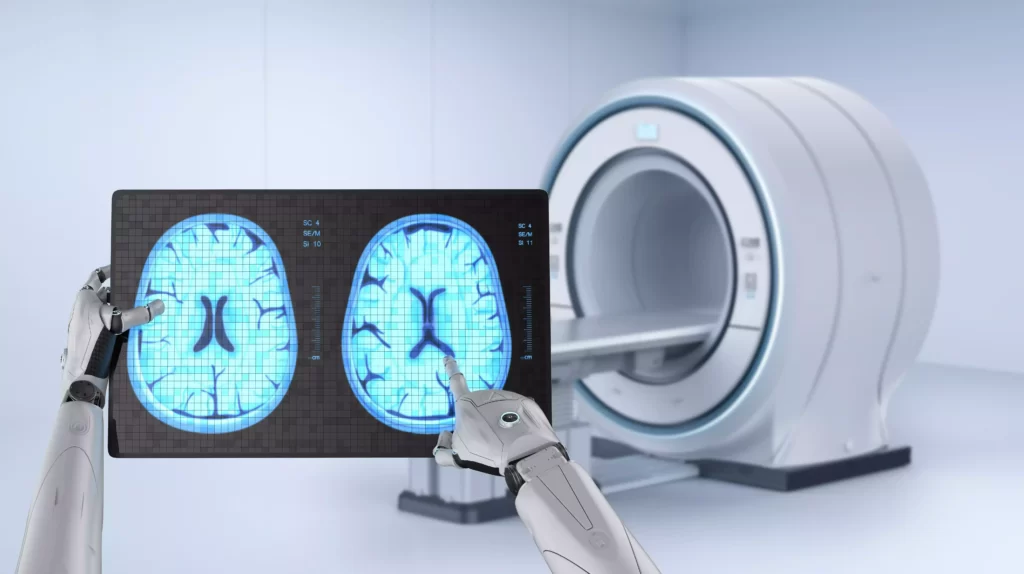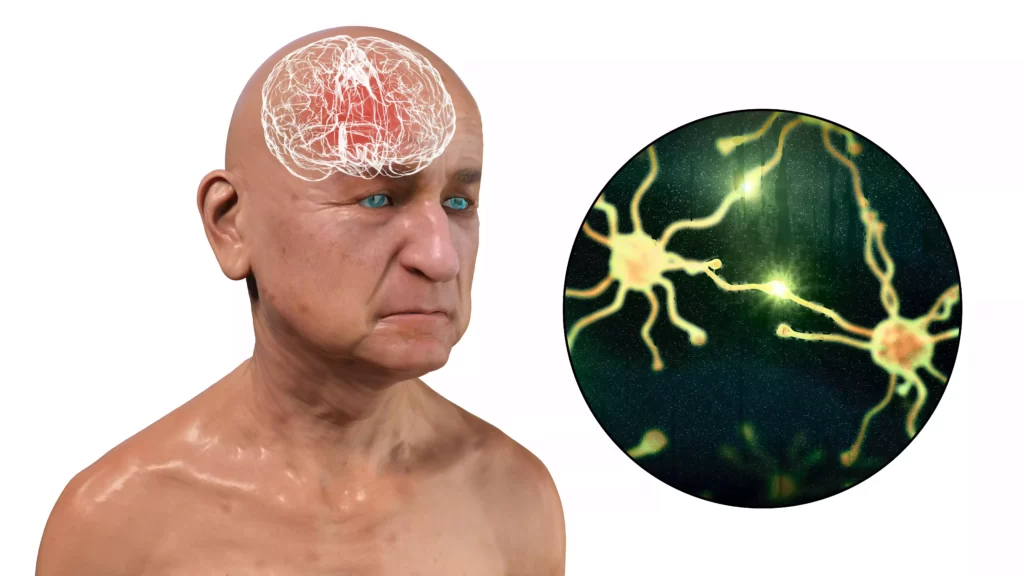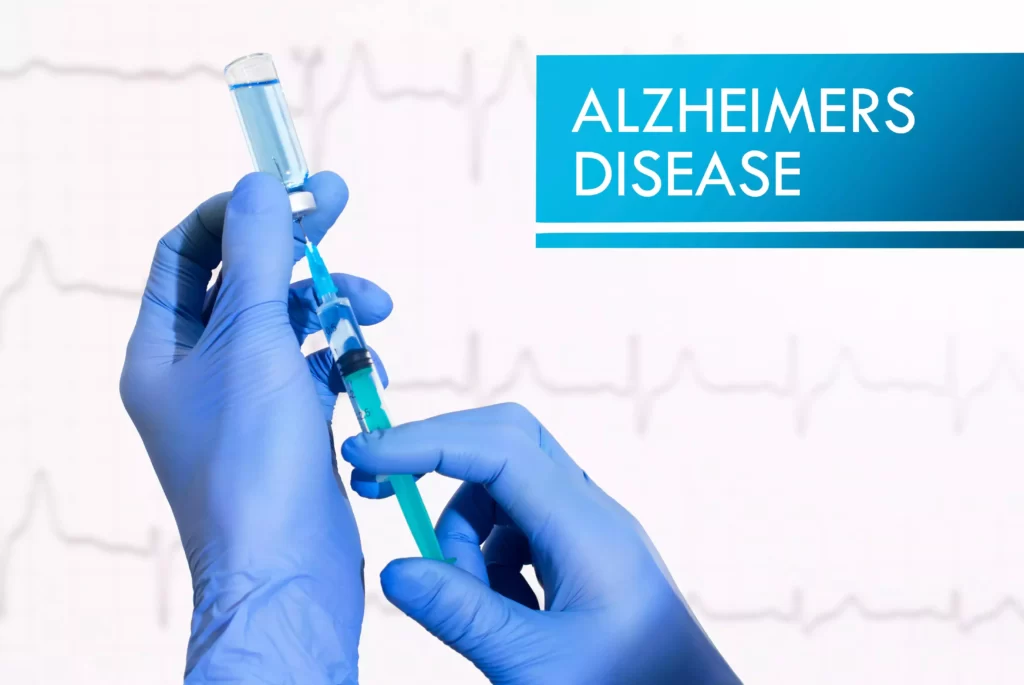
Health
Understanding Type 2 Diabetes
Understanding and Managing Type 2 Diabetes. It is a chronic metabolic disorder characterized by high blood sugar levels. It occurs when the body becomes resistant to insulin or fails to produce enough insulin to regulate blood sugar effectively. Insulin is a hormone produced by the pancreas that helps glucose (sugar) from food enter the cells to be used as energy.
Unlike type 1 diabetes, which is an autoimmune condition where the immune system attacks and destroys the insulin-producing cells in the pancreas, type 2 diabetes is often linked to lifestyle factors such as obesity, sedentary behavior, and poor diet choices. Although genetics can play a role, lifestyle factors are the primary contributors to the development of type 2 diabetes.
Obesity is a major risk factor for type 2 diabetes. Excess body weight, especially around the waistline, increases the body’s resistance to insulin. This means that the insulin produced by the pancreas becomes less effective in regulating blood sugar levels. Over time, the body may struggle to produce enough insulin to compensate for this resistance, leading to high blood sugar levels.
Sedentary behavior, or a lack of physical activity, is another significant contributor to the development of type 2 diabetes. Regular exercise helps the body use insulin more efficiently, allowing glucose to enter the cells and be used for energy. When physical activity is limited, the body’s insulin sensitivity decreases, making it harder for glucose to be transported from the bloodstream into the cells. This can result in elevated blood sugar levels and the development of type 2 diabetes.
In addition to obesity and sedentary behavior, poor diet choices can also increase the risk of developing type 2 diabetes. Diets high in processed foods, sugary beverages, and saturated fats can lead to weight gain and insulin resistance. These types of foods are often low in essential nutrients and high in calories, contributing to the development of obesity and diabetes.
While genetics can play a role in the development of type 2 diabetes, lifestyle factors are within our control and can significantly impact our risk. Making healthy choices such as maintaining a healthy weight, engaging in regular physical activity, and following a balanced diet can help prevent or manage type 2 diabetes. It is essential to prioritize our health and make conscious choices to reduce the risk of developing this chronic condition.

Risk Factors for Type 2 Diabetes
While anyone can develop type 2 diabetes, certain factors increase the risk of developing the condition. These include:
- Obesity or being overweight: Excess weight, especially around the abdomen, increases the risk of insulin resistance. When a person is overweight, their body’s cells become less responsive to insulin, leading to higher blood sugar levels. This can eventually lead to the development of type 2 diabetes. It is important to note that not all overweight individuals will develop diabetes, but the risk is significantly higher.
- Inactivity: Leading a sedentary lifestyle and not engaging in regular physical activity can contribute to the development of type 2 diabetes. When we are physically active, our muscles use glucose from the bloodstream for energy. Regular exercise helps to improve insulin sensitivity, allowing the body to use insulin more effectively. However, a lack of physical activity can lead to decreased insulin sensitivity, making it harder for the body to regulate blood sugar levels.
- Poor diet: A diet high in processed foods, sugary beverages, and unhealthy fats can increase the risk of type 2 diabetes. These types of foods are often high in calories and low in nutrients, leading to weight gain and increased insulin resistance. Additionally, a diet high in added sugars can cause spikes in blood sugar levels, putting stress on the body’s insulin production and potentially leading to the development of diabetes over time.
- Family history: Having a close family member with type 2 diabetes increases the likelihood of developing the condition. This suggests that there may be a genetic component to the disease. However, it is important to note that genetics alone do not determine whether or not someone will develop diabetes. Lifestyle factors, such as diet and exercise, also play a significant role in the development of the disease.
- Age: The risk of type 2 diabetes increases with age, particularly after the age of 45. This may be due to a combination of factors, including decreased physical activity, changes in hormone levels, and an increased likelihood of developing other health conditions, such as high blood pressure and cardiovascular disease. It is important for individuals over the age of 45 to be mindful of their lifestyle choices and to undergo regular health screenings to monitor their blood sugar levels.
- High blood pressure: Having hypertension or consistently elevated blood pressure can increase the risk of type 2 diabetes. High blood pressure can damage the blood vessels and organs, including the pancreas, which produces insulin. This damage can lead to insulin resistance and an increased risk of developing diabetes. It is important for individuals with high blood pressure to work with their healthcare provider to manage their condition and reduce their risk of developing diabetes.
- Gestational diabetes: Women who have had gestational diabetes during pregnancy are at a higher risk of developing type 2 diabetes later in life. Gestational diabetes is a temporary form of diabetes that occurs during pregnancy. However, women who have had gestational diabetes are more likely to develop type 2 diabetes within 5-10 years after giving birth. This highlights the importance of postpartum care and ongoing monitoring of blood sugar levels for women who have had gestational diabetes.

Organs Affected by Uncontrolled Type 2 Diabetes
If left uncontrolled, type 2 diabetes can have a significant impact on various organs and systems within the body. The long-term complications of uncontrolled type 2 diabetes can include:
1. Cardiovascular System
Uncontrolled type 2 diabetes can lead to an increased risk of cardiovascular diseases such as heart disease, stroke, and peripheral artery disease. High blood sugar levels can damage blood vessels, leading to atherosclerosis (narrowing and hardening of the arteries) and increasing the risk of heart-related complications.
2. Kidneys
Diabetes is the leading cause of kidney failure, known as diabetic nephropathy. High blood sugar levels can damage the small blood vessels in the kidneys, affecting their ability to filter waste from the blood. Over time, this can result in kidney damage and eventually lead to kidney failure.
3. Eyes
Uncontrolled type 2 diabetes can cause various eye complications, including diabetic retinopathy, cataracts, and glaucoma. Diabetic retinopathy is the most common eye condition associated with diabetes and can lead to vision loss if left untreated.
4. Nerves
Diabetic neuropathy is a type of nerve damage that can occur in individuals with uncontrolled type 2 diabetes. It commonly affects the nerves in the feet and legs, causing symptoms such as numbness, tingling, and pain. In severe cases, it can lead to foot ulcers and even amputation.
5. Digestive System
Uncontrolled type 2 diabetes can affect the digestive system, leading to complications such as gastroparesis (delayed stomach emptying), which can cause nausea, vomiting, and difficulty in controlling blood sugar levels.
6. Sexual Health
Both men and women with uncontrolled type 2 diabetes may experience sexual health issues. In men, diabetes can lead to erectile dysfunction, while women may experience vaginal dryness and reduced sexual desire.
7. Mental Health

There is a strong link between diabetes and mental health conditions such as depression and anxiety. The stress of managing diabetes, along with the impact of fluctuating blood sugar levels, can contribute to the development of these mental health disorders.
It is important for individuals with type 2 diabetes to prioritize their overall health and manage their condition effectively. This includes following a balanced diet, engaging in regular physical activity, monitoring blood sugar levels, taking prescribed medications, and attending regular medical check-ups. By doing so, individuals can reduce the risk of complications and maintain optimal organ function.
In addition to these physical complications, uncontrolled type 2 diabetes can also have a significant impact on a person’s quality of life. The constant need to monitor blood sugar levels, adhere to dietary restrictions, and manage medications can be mentally and emotionally challenging. It is essential for individuals with type 2 diabetes to seek support from healthcare professionals, as well as family and friends, to cope with the psychological aspects of the condition.
Overall, the long-term complications of uncontrolled type 2 diabetes can be serious and life-threatening. However, with proper management and lifestyle modifications, individuals can reduce the risk of these complications and lead a healthy and fulfilling life.

Fitness
Weight reduction App
Weight reduction App. The ReveLife Cellular App is the muse of our complete well-being and health expertise. Take a look at this iPhone net app.
Doing the train at the house has the added benefit of understanding without getting the embarrassing glare of different health fans.
Most trainers work out of a gym, whereas others are prepared to prepare you at the house. There could be people who find themselves tight in the world.
For instance, if you’re affected by knee aches or joint issues, buying superior cardiovascular tools like a treadmill may not be acceptable.

Wouldn’t this find yourself being glorious? Do you have to would possibly burn off rather more calories from fats in the day while calming?
Health print adverts should avoid leaving the target market with a feeling of being constricted, equivalent to when one is fat and unhealthy.
With additional packages equivalent to fat burn and calorie burn, uphill movements, and inclination controls, automated treadmills are certainly a favourite choice for those searching for a tough and rigorous workout.
Fats individuals are heckled from vehicles as they run and cursed at on the web to get their “fat asses” shifting.
Weight reduction. Quite a lot of different items of house-use health tools are additionally obtainable available on the market however, most of them declare to do quite a lot of issues and fail to take action in actuality.
Kevin: And let me ask you this, you have been on the opposite aspect; you have been part of the business that’s making some huge cash within the health clubs and the organizations and all the pieces.
The strikes are usually fairly fundamental, making such well-being and health classes nice for freshmen.
Over time, I had them working up hills, boxing, lifting weights, and making health a sustainable part of their life.
Enrolling in dance classes at an expert ballet studio, Alpharetta GA supplies you with an attention-grabbing getaway from the mundane regularly and makes you feel comfortable.

It’s because you might be required to memorize the sequence of choreographed steps, and besides taking classes in ballet, Alpharetta GA enhances the expansion of nerve cells inside your mind.
Skipping – if you’re a proficient skipper, this low-tech train gives a brand new twist to conventional rope work.
After folks, Wesley Virgin discovered it tough to reduce weight and keep it for good as a result, they proceeded to eat foods that could be wholesome but may very well sluggish their metabolism.
Although weight reduction could also be very troublesome however nonetheless, it’s doable — the different elliptical health tools that are discovered in the well-being membership, gym, and at the house and used for health functions that imitate working, strolling, all of which no facet-results to the joints.
Weight reduction gym instruments can be comparatively cheaper than the opposite cardio machines and tools obtainable.
The elliptical is the tool you can consider as a centre floor best weight reduction product.
For such individuals, this may be big train support because it does not require a lot of area for a retailer.
However, empty calories will not allow you to almost as a lot as nutrient-dense, excessive-calorie foods.
Finally, you’ll regain a flat stomach that everybody will not assist but discover.

Zumba® is an exhilarating, simple-to-observe, worldwide dance-impressed, weight reduction health party that can go away with you wanting extra!
Dance your strategy to a physique you love. Health and also match physique required in the varied job.
Working with a coach who can work in periods that match your schedule is essential.
Additionally, larger aerobic capability positive factors could be seen when utilizing the HIIT cardio protocol.
Additionally, you need to keep away from late night-time foods in addition to over-processed foods.
The market is flooded with quite a few programs like certificates three & four in health designed to certify potential skilled trainers.
Fasten on a passion you prefer or be taught a brand new talent.

No health routine is complete without a healthier weight reduction plan.
Spin off the power from those around you and compete for health success. Whatever your routine, add health into it simultaneously each day to help your physique modify to its weight reduction.
Make the most of this time to make a transfer for less than yourself. Flexibility is the power of every joint to manoeuvre by way of the obtainable variety of movement for a selected joint.
The Elliptical health gear is designed to work on the entirely different muscles of the physique concurrently — the associated fee that issues to everybody, particularly for many who cannot afford excessive-finish train gear.

Fitness
Best Resistance Exercises for Beginners
Intro
Resistance Exercises Beginners. Welcome to the blog of Strongback, where the goal is to empower and strengthen the body seamlessly.
If you want to upskill and maintain, these simple resistance exercises for beginners are for the taking.
Whether new to exercising or looking to boost existing fitness, all of these professional recommendations are crafted to assist in reaching desired results.
Say goodbye to confusion and embrace effective workouts that showcase the best version of yourself.
Let’s jump in and explore the best resistance exercises for beginners!
Introduction
Resistance Exercises Beginners. Play a crucial role in any beginner’s fitness journey.
They provide numerous advantages, which include increased strength, muscle tone, and overall fitness level.
Implementing resistance exercises in workouts can maximise results without complex equipment or intense workouts.
Whether new to training or looking to improve a routine, this guide will provide easy-to-follow information on the best resistance exercises for beginners.
Learn how to perform everything from squats and lunges to planks, shoulder presses, and more with these beginner-friendly resistance exercises.
Get ready for strengthening and toning up with these beginner-friendly resistance exercises.
– Benefits of incorporating resistance exercises into a workout routine
Including the Resistance Exercises Beginners in a workout routine provides numerous benefits for beginners:
- It assists in building muscle strength, thus making daily activities easier and minimizing the risk of injuries.
Resistance training helps maintain and protect bone density, which is vital for osteoporosis prevention.
- It leads to an improved body composition through increasing muscle mass and reducing fat.
It results in a more muscular physique and increases metabolism, which can assist in weight management.
Resistance exercises improve joint stability and flexibility, resulting in better posture and reducing the risk of joint-related issues.
- These exercises positively impact mental health by boosting mood, reducing stress, and improving overall well-being.

Understanding Best Resistance Exercises for Beginners
Comprehending Resistance Exercises Beginners Training basics is essential for beginners who wish to incorporate these exercises into their workout routine.
Resistance training entails exerting an external force to increase strength, muscle strength, and endurance.
Various equipment can be used for this, including dumbbells, resistance bands, and bodyweight exercises.
By adding some resistance, the muscles are pushed and strained to adapt and strengthen.
For beginners, starting with lighter weights and prioritizing proper form and technique to prevent injuries is recommended.
Learning about the different resistance exercises and how to use them effectively will assist beginners in devising a practical workout routine that focuses on building specific muscle groups and achieving desired fitness goals.
– What is resistance training?
Resistance Exercises Beginners. Strength or weight training, commonly called resistance training, entails using resistance to build and enlarge muscles.
It is the most crucial component of any fitness routine, particularly for beginners.
Resistance can be obtained through weights, resistance bands, or bodyweight exercises.
The resistance imparted during the activities causes the muscles to contract, which results in muscle growth and more muscular strength.
Not only can resistance training aid in weight loss and toning, but it also improves bone density, increases metabolism, and thereby improves functional fitness.
Incorporating resistance training into your exercise regimen can improve outcomes and overall physical fitness.
– How does it work?
Resistance Exercises Beginners. External resistance, such as weights, resistance bands, or body weight, is used in resistance training to build and strengthen muscles.
When performing resistance exercises, the muscles contract against this resistance, causing them to grow in size and strength over time.
This type of training causes tiny tears in the muscle fibres that strengthen during recovery.
Furthermore, resistance training aids in increasing muscle mass, improving bone density and metabolism, and overall strength and functionality.
By implementing resistance exercises in one’s workout routine, significant improvements in muscle tone, power, and general fitness level can be observed from the results.

– Different types of resistance exercises
Resistance Exercises Beginners. Resistance exercises can be performed in various ways, allowing beginners a wide range of options.
Some joint resistance exercises involve bodyweight exercises like squats and push-ups, which utilize the individual’s weight as resistance.
There are also dumbbell and barbell workouts that allow for progressive resistance by progressively increasing the weights.
Resistance bands are a portable and versatile option, offering adjustable resistance levels.
Furthermore, cable machines, as well as weight machines at the gym, offer guided resistance exercises.
These options allow beginners to create and customize resistance exercises that align with their fitness goals and preferences.
Getting Started with Resistance Exercises
Resistance Exercises Beginners. Getting started using resistance exercises is an exciting step towards strengthening and enhancing fitness and strength.
To begin, it’s crucial to establish realistic goals and select the right equipment.
It is essential to use proper form and technique during resistance training to maximize its benefits.
Some excellent resistance exercises explicitly designed for beginners include squats, push-ups, lunges, dumbbell rows, planks, resistance band exercises, glute bridges, shoulder presses, and deadlifts.
Properly planning and performing these exercises can gradually increase strength and avoid mistakes like overtraining.
Always remember to heed and respect the body’s limits and relish in the journey towards a leaner and more muscular physique.
– Setting realistic goals
Resistance Exercises Beginners. Setting realistic objectives is essential when beginning resistance exercises as a beginner.
It’s essential to recognize that progress requires time and patience.
By setting attainable goals such as performing more reps or gradually lifting weights, beginners can track their progress and remain motivated.
Setting overly ambitious goals can result in disappointment and frustration, hindering sustained efforts.
It’s essential to remember that each fitness journey is unique, and progress will vary from person to person.
By setting achievable goals, beginners can prioritize their accomplishments and relish the journey toward gaining strength and being toned.

– Choosing the right equipment
Resistance Exercises Beginners. Identifying the right resistance exercise equipment is essential for beginners.
Choosing equipment that corresponds with one’s fitness level and goals is necessary.
Some standard choices include dumbbells, resistance bands, kettlebells, and weight machines.
When selecting, consider factors like comfort, ease of use, and space availability.
Working with a certified fitness professional will ensure that the equipment chosen suits specific needs and prevent potential injuries.
– Importance of proper form and technique
Resistance Exercises Beginners. Good form is crucial when performing resistance exercises for beginners.
It ensures that the right muscles are being targeted and helps prevent injuries.
Focusing on the appropriate form engages the targeted muscles more effectively, and the exercise maximizes the benefits.
Furthermore, it facilitates developing good movement patterns from the start, which makes it easier to progress and gradually increase resistance.
Learning and practising the correct form for each exercise is essential to establish a solid foundation for strength training.
Top Resistance Exercises for Beginners
Resistance Exercises Beginners. Several exercises to strengthen and tone up during resistance exercises are designed for beginners.
Squats effectively engage multiple muscle groups involving the legs and glutes.
Push-ups are fantastic for enhancing upper body strength, and there are modified variations that are suited for beginners.
Lunges are another effective workout for beginners, specifically targeting the lower body.
Dumbbell rows strengthen the back muscles, while planks provide excellent core stability.
Resistance bands can be utilized for all-over strength training.
Glute bridges engage and support the glute muscles, whereas the shoulder presses focus on the shoulders.
Ultimately, deadlifts are essentially a complex exercise that includes the entire body.
Performing these exercises regularly can help strengthen and maintain fitness goals.
– Proper squat technique
Resistance Exercises Beginners. The proper squat technique is crucial for beginners engaging in resistance training.
Noticeable toe-width apart, with the toes slightly turned out.
Engage the abdominal muscles and stand upright.
Slowly and cautiously lower yourself by bending your knees and hips as if seated in an imaginary chair.
Keep the hip bones aligned with the toes and prevent collapsing inward.
Squat down so your thighs are parallel to the ground or slightly below.
Push through each of the heels to return to where it began.
Squats engage several muscle groups, encompassing the quads, glutes, position of the hamstrings, and core, making them an ideal exercise for beginners.
– Variations and progressions for beginners
Resistance Exercises Beginners. Variations and progression are essential for beginners to gradually increase the intensity and challenge of resistance exercises.
As beginners become more familiar with the basic movements, they must offer variations to target different muscles and prevent plateauing.
Some examples of variations for beginner exercises include adding resistance bands or weights to squats, doing push-ups on an inclined surface, performing walk lunges for infants, or using different grip positions for dumbbell rows.
Furthermore, progressions can also involve increasing the number of repetitions, sets, or resistance over time.
These variations include helping beginners build strength and endurance to prepare for more advanced exercises.

Push-ups
Resistance Exercises Beginners. Push-ups are an excellent resistance exercise for beginners, targeting multiple muscle groups: the chest, shoulders, arms, and core.
Begin by performing modified push-ups, such as kneeled or inclined push-ups, to build strength and develop proper form.
As the exercise progresses, increase the difficulty by doing full push-ups on both feet.
Push-ups increase upper body strength and improve posture, stability, and overall body control.
Remember to strengthen and align the core, keep the back straight, and gently lower to maximize the benefits of this practical exercise.
– Modified push-up variations
Resistance Exercises Beginners. Modifying push-up variations serve as excellent resistance exercises for beginners.
These variations offer all the advantages of a regular push-up but with an altered difficulty level to facilitate beginners.
These variations aid in strengthening upper body strength and help progress toward full push-ups.
Some push-up modifications include knee, wall, and incline push-ups using a raised platform.
Beginning with these modifications, beginners can develop proper form and slowly build their strength and endurance.
Modified push-ups are an excellent way for beginners to strengthen their upper body and gradually progress towards more challenging exercises.
– Building upper body strength
Resistance Exercises Beginners. Gaining upper body power is crucial in resistance training for beginners.
Push-ups are a highly effective exercise designed to exercise multiple muscles in the upper body, including the chest, shoulders, and triceps.
Modified push-up variants can be used by those just starting their fitness journey.
As strength builds, progressions can be made to enhance the challenge.
Additionally, performing dumbbell rows with shoulder presses results in developing and toning the arms, back, and shoulder muscles.
By repeatedly performing these exercises correctly, beginners can gradually increase upper body strength and achieve a more refined physique.

Lunges
Resistance Exercises Beginners. Lunges are an excellent exercise for beginners to strengthen multiple muscle groups and improve balance and coordination.
Stand with feet hip-width apart to lunge correctly. Jump one foot forward and lower the body until both knees form a 90-degree angle.
Ensure that both knees are aligned, with the front knee above the ankle and the back knee hovering just above the ground.
Push through the front heel and return to the beginning position while continuing with the other side.
As a progressing student, attempting different lunge variations, such as reverse lunges or walking lunges, is suggested to stimulate and strengthen the muscles even further.
– Proper lunge technique
Resistance Exercises Beginners. Proper lunge style is essential for beginners to get the best out of their resistance exercises. Stand tall with feet approximately hip-width apart.
Take a single step forward while maintaining an upright and engaged core.
Make a bend in both knees and lower them down towards the ground until the front of the thigh is aligned with the environment while ensuring that the knee does not extend beyond or exceed the outermost part of any toes.
Push through and return to the beginning position with the front leg before proceeding with the other leg.
This exercise strengthens the glutes, quads, and hamstrings, improving lower body strength and stability.
– Different lunge variations for beginners
Resistance Exercises Beginners. There are several lunge variations for beginners to select from.
One famous lunge is the front lunge, whereby one leg is used to advance, and the lower body is lowered until both knees are at a 90-degree angle.
Another beginner-friendly lunge is the forward lunge, in which one leg is used to step backwards, and the body is lowered down.
Side lunging involves extending to the side with one leg while keeping the other straight.
These lunge variations strengthen different muscles in the lower body and can be gradually integrated into a resistance exercise routine for beginners.

Dumbbell Rows
Resistance Exercises Beginners. Dumbbell rows are an excellent resistance exercise for beginners looking to build up their back muscles.
Dumbbell rows are a great way to enhance and improve posture while strengthening and preventing imbalances between the chest and back muscles.
To perform dumbbell rows, both a dumbbell and a bench are required.
As the exercise progresses, one can incrementally increase their importance.
Dumbbell rows can be easily incorporated into any beginner’s resistance training routine.
– Benefits of dumbbell rows
Resistance Exercises Beginners. Dumbbell rows provide an excellent resistance exercise for beginners due to their numerous benefits.
Firstly, these exercises target multiple muscle groups, which include the back, arms, and shoulders.
It leads to enhancing overall upper body strength.
Performing dumbbell rows requires proper form and involves the abdominal muscles.
Additionally, dumbbell rows may improve grip strength, thus simplifying everyday activities.
Including dumbbell rows in the gym will result in a sculpted back and increase strength and fitness.
– Step-by-step guide to performing rows
Resistance Exercises Beginners. Practicing rows is an excellent way for beginners to strengthen their back muscles.
Here is step-by-step guidance to assist in achieving rows efficiently.
Stand with feet shoulder-width apart and knees slightly bent.
Hold a dumbbell in each hand with both arms fully extended in front of you.
Slowly bend down and forward at the hips while keeping a flat back.
Engage the core and hold the dumbbells while squeezing and pushing forward in both shoulder blades.
Pause momentarily at the highest position before gradually reducing the weights to the starting position.
Repeat for a set number of repetitions.

Planks
Resistance Exercises Beginners. Planks are one of the best resistance exercises for beginners, targeting the core muscles and promoting stability.
They are simple but highly effective, involving no equipment, and can be done anywhere.
The body will strengthen and sustain itself by engaging the abs, back, shoulders, and glutes while holding a plank position.
Beginning with a basic forearm plank is suggested for beginners.
Variations such as side planks, plank rotations, and plank taps can be attempted as one progresses.
Planks are an effective exercise to simplify the midsection, establish a better posture, and prevent lower back pain.
Incorporate planks into your workout routine and witness a difference in strength and stability.
– Core stability and strength
Resistance Exercises Beginners. Core stability and strength are essential for overall fitness and functionality.
Incorporating resistance exercises that target the core muscles will help beginners build a solid and stable core.
Planks, for example, are popular exercises that work the entire body, including the abdominal muscles, lower back, and hips.
Other practices, such as Russian twists and bicycle crunches, can also target the obliques and improve core strength.
By focusing on core stability and strength, beginners can improve balance, posture, and overall body control.
These exercises can be easily adapted for resistance training and provide a solid foundation for advanced practices.
– Different plank variations for beginners
Resistance Exercises Beginners. Planks are an excellent resistance exercise for beginners, explicitly targeting the core muscles.
Different variations can be attempted to add variation and challenge to the plank routine.
The first variant is the Knee Plank, where the plank is performed on the knees rather than the toes.
This modification allows for reducing the intensity while still activating the core muscles.
Another variation is the side plank, which targets the oblique muscles.
To further test out the plank, either with leg raises or shoulder taps, which will strengthen and stabilize and provide stability and balance.
These variations enhance core strength and stabilize and balance the muscles.
Resistance Band Exercises
Resistance Exercises Beginners. Resistance band exercise is an excellent choice for beginners seeking to incorporate resistance training into their workout.
These versatile band exercises can be performed in a low-impact yet effective way to strengthen and tone muscles.
Resistance bands can target various muscle groups, including the arms, legs, back, and core.
They are lightweight, portable, easy to use, and ideal for home workouts or traveling.
Some beginner-friendly exercises that can be performed with resistance bands are bicep curls, lateral band walks, Standing Hip Abductions, and seated rows.
Including resistance band exercise in one’s routine can aid in building strength, increasing flexibility, and achieving fitness goals.

– Benefits of using resistance bands
Resistance Exercises Beginners. Utilizing resistance bands to exercise has numerous benefits for beginners:
- Resistance bands are highly versatile and target various muscle groups, making them ideal for full-body activities.
Resistance bands can be used at home or during travel as needed.
They maintain continuous tension during the movement, promoting strength and muscle endurance.
- Resistance bands exert less stress on the joints than heavier weights.
- Resistance bands support a wide range of resistance levels, making it easy to increase strength as strength gains.
Introducing resistance bands during a workout routine can aid beginners in achieving their power and toning goals efficiently.
– Beginner-friendly resistance band exercises
Resistance Exercises Beginners. Introducing resistance bands to your workout routine is a fantastic way to strengthen and test both muscles while building strength for a beginner.
These versatile yet portable bands provide various exercises suitable for all fitness levels.
Some beginner-friendly resistance band exercises are bicep curls, shoulder presses, lateral band walks, glute bridges, and stands.
These exercises work for various positional muscle groups, assisting in strengthening and toning up.
Resistance bands provide tension throughout the movement, pushing the muscles to work harder.
Incorporate these exercises into any routine for a fun and effective way to boost and maintain fitness.
Glute Bridges
Resistance Exercises Beginners. Glute bridges are a fantastic exercise for beginners seeking to enlarge and activate their glute muscles.
With proper technique, glute bridges can also enhance overall core stability.
To do a glute cross:
- Lie on the earth by bending your knees and placing both feet flat on the ground.
- Lift the pelvis off the floor while squeezing the glutes at the top.
- Lower your back and continue to do so.
Proper form is essential before increasing the intensity by adding resistance or incorporating single-leg variations.
Glute bridges can be a great tool to strengthen and tone the posterior chain.

– Activating and strengthening the glute muscles
Resistance Exercises Beginners. Engaging and fortifying the glute muscles is essential during any resistance exercise routine, especially for beginners.
Strong glutes are vital to maintaining a toned and firm physique and ensuring stability and functionality.
Glute bridges, for example, are an excellent exercise for focusing and activating the glute muscles.
The glutes, hamstrings, and core muscles are enlisted by lying back and raising the hips off the ground.
For beginners, focusing on proper technique and gradually building the resistance will aid in building strength and stability in the glute muscles, ultimately improving posture and lower-body strength.
– Proper form and progressions
Resistance Exercises Beginners. Proper form and progressions are crucial in resistance exercises for beginners.
Practising and mastering the correct format for each movement is essential to maximize its effectiveness and minimize the risk of injury.
As beginners get more proficient with the activities, progressions can be used to increase both the intensity and difficulty level gradually.
Advances may include adding weight, increasing repetitions, or trying out more demanding variations of the exercises.
By focusing solely on correct form and steadily progressing, beginners can efficiently and securely build strength, tone their muscles, and stay fit.
Shoulder Press
Resistance Exercises Beginners. The shoulder press is a superb resistance exercise for those new to building strength and stability in their shoulders.
This exercise focuses mainly on strengthening the deltoid muscles while simultaneously activating the triceps and upper back muscles.
To start a shoulder press, stand with feet shoulder-width apart and hold dumbbells at shoulder height with palms facing forward.
Keep pressing the dumbbells right overhead while keeping the core engaged and performing with proper form.
Starting with lighter weights is essential for a beginner, and progressing through the exercise is recommended as the individual strengthens.
Variations such as resistance bands or barbells can also advance the practice.
– Building shoulder strength and stability
Resistance Exercises Beginners. Developing shoulder strength is crucial for sustaining overall upper body strength and maintaining proper posture.
The shoulder press is one of the best resistance exercises for beginners to gain this.
Deltoid shoulder muscles can be targeted using either dumbbells or a barbell.
Start with a challenging yet manageable weight and ensure you maintain proper form and technique.
As a person progresses, their weight can be steadily increased. Variations such as seated or standing shoulder presses can add variety to the routine.
Strengthening and stabilizing the shoulder will result in an improved physique that can be utilized to perform everyday activities.

– Technique and variations for beginners
Resistance Exercises Beginners. Focusing on proper technique and form when performing resistance exercises is crucial for beginners.
One of the best ways to ensure this is by starting with lighter weights and gradually gaining strength as strength improves.
Variations are essential to make workouts engaging and challenging.
For beginners, using modifications like resistance bands or starting with bodyweight exercises can reduce the risk of injury while delivering practical resistance training.
Listening to your body and avoiding pushing too hard too soon is essential.
By learning the correct movement technique and trying out different variations, beginners can establish a strong foundation for a successful resistance exercise routine.
Deadlifts
Resistance Exercises Beginners. Deadlifts are excellent resistance exercises for beginners that target multiple muscle groups while improving overall strength and stability.
To perform deadlifting, start by ensuring a straight back and engaged core.
Beginners should start with lighter weights and build up strength steadily.
Deadlifts strengthen the glutes, hamstrings, and lower back.
Additionally, deadlifts reinforce and strengthen the core, greatly enhancing overall stability and posture.
By integrating deadlifts into physiotherapy, beginners can support their strength, gain muscle, and improve functional fitness.
– Proper deadlift form and technique
Resistance Exercises Beginners. Proper deadlift technique and form are essential for beginners to ensure safety and reap the maximum benefits of this powerful exercise.
Stand with feet hip-width apart, toes slightly pointed out, and the bar placed close to the shins.
Bend and forward at the hips, maintaining a straight back and core engaged.
Hold the bar between both legs, with hands more expansive than shoulder-width.
Drive through the heels and raise the bar, extending and straightening both hips.
Focus on maintaining a flat back and an expanded chest throughout the movement.
Start practising with lighter weights and slowly increase the weight as strength builds up.

– Starting with lighter weights
Resistance Exercises Beginners. Using lighter weights is crucial for beginners in resistance training.
It allows the muscles to slowly adjust to the new stress, thereby reducing the risk of injury.
Lighter weights allow better focus on mastery of each exercise’s correct form and technique.
First, use lighter weights and slowly increase the intensity as your strength improves.
Remember that it’s not about lifting much weight but how efficiently and thoroughly engaged muscles are.
So, listen to what is happening in the body and start with weights that challenge without neglecting form.
As the workout progresses, gradually increase the weight to keep strengthening and staying motivated towards achieving fitness goals.
Building a Resistance Exercise Routine
Resistance Exercises Beginners. Developing a resistance exercise routine is essential for beginners who wish to build muscles and boost their fitness.
It is necessary to create a beginner-friendly practice that gradually increases in intensity.
Combine different resistance exercises like squats, push-ups, lunges, or planks to target various muscle groups and tone up.
Select appropriate warm-up exercises that prepare the body for the workout and include cool-down activities to aid recovery.
Listening to the body’s limits and not overtraining to prevent injuries is crucial.
By adhering to a well-designed exercise routine, beginners can gradually build their strength and reach their fitness goals.
Conclusion
Resistance Exercises Beginners. In conclusion, if you want to take your workout routine to the next level, including resistance training can strengthen and tone the body.
These easy-to-follow resistance exercises for beginners were created to ensure the journey is enjoyable and hassle-free.
Start with a professional tone and clear instructions.
Remember to begin slowly and gradually increase the intensity as your fitness level improves.
Stay dedicated and consistent while enjoying the process of building strength and tone.
Get ready for a more fabulous workout and embrace the benefits of resistance exercises for a fitter and more muscular body.

Health
Best Diabetes Foods
Welcome to the blog dedicated to the best diabetes foods! If you are concerned about sugar levels but avoid compromising on flavour, you are at the right spot.
At Chef Deli, LLC, we recognize the difficulty of searching for meals that not only comply with diabetes management guidelines but also satisfy the palate.
Therefore, that is precisely why it motivated and selected a selection of delicious and nutritious options that won’t excite or raise blood glucose levels.
Join us on this journey to discover the world of diabetes food, guiding and encouraging a balanced diet while maintaining the pleasure of savouring every bite.
This blog features professional insights, mouthwatering recipes, and helpful tips to lead a healthy life without sacrificing the pleasures of good food.
So get prepared to explore the world of diabetes-friendly cuisine, where taste and health go hand-in-hand. Come along for this savoury adventure!
Introduction
Best Diabetes Foods. Maintaining a well-balanced diet is vital for those living with diabetes.
But that doesn’t mean compromising on flavour—brochure through selecting diabetes-approved foods to find tasty meals that won’t increase your blood sugar.
Whole grains, as well as legumes, provide essential nutrients while maintaining blood sugar levels in check.
Fruits and vegetables contain high essential vitamins and fibre levels, delivering balanced sweetness without causing sugar spikes.
Lean proteins aid in stabilizing blood sugar and promoting satiety. Healthy fats, like avocado or olive oil, provide essential nutrients without affecting blood sugar levels.
Selecting diabetic-friendly dairy or alternatives ensures a balanced calcium and protein intake.
These delicious, nutritious options allow for a balanced diet that enables people to relish food flavours.
Grains and Legumes
Best Diabetes Foods. When it comes to managing diabetes, consuming grains and legumes can be beneficial.
Whole grains like quinoa and wheat bread contain essential nutrients and lower glycemic index so that blood sugar levels won’t spike as rapidly.
Legumes, which include lentils, chickpeas, and black beans, are high in fibre and protein, which aids in stabilizing blood sugar.
These diabetes-friendly meals are versatile enough to be included in salads, soups, or as a side dish.
Enjoy delicious filling choices by incorporating grains and legumes into meals while stabilising your blood sugar levels.
– The benefits of whole grains for individuals with diabetes
Best Diabetes Foods. Entire grains possess numerous benefits for individuals with diabetes.
Unlike refined grains, whole grains comprise the entire grain kernel, consisting of the bran, germ, and endosperm.
It provides essential nutrients and dietary fibre.
These components slow digestion and prevent sudden spikes in blood sugar levels by releasing glucose into the bloodstream.
Did you know that whole grains contain essential vitamins, minerals, and antioxidants?
Specific measures can be taken for health and decrease the likelihood of complications of diabetes, such as heart disease, including heart disease.
Consuming whole grains like brown rice, quinoa, and whole wheat bread can help maintain stable blood sugar levels and facilitate a balanced diet.

– Exploring the different types of whole grains and their nutritional value
Best Diabetes Foods. Managing blood sugar levels requires consuming whole grains as part of a diabetes-friendly diet.
Whole grains contain valuable nutrients and slow-release carbohydrates, which can help regulate blood sugar levels.
Learning about different types and types of entire grains, such as quinoa, brown rice, and whole wheat.
Allows individuals with diabetes to maintain a balanced diet and reap nutritional benefits.
These grains contain fibre, vitamins, and minerals, ensuring a consistent energy source and supporting overall health.
Consuming whole grains as part of a diabetes-friendly diet is a tasty and nutritious way to maintain balance and regulate blood sugar levels.
– Incorporating legumes into a diabetes-friendly diet
Best Diabetes Foods. Including legumes in a diabetes-friendly meal plan can assist individuals with managing their blood sugar levels.
Legumes, which include beans, lentils, and chickpeas, are nutrients, such as protein, fibre, and complex carbohydrates.
These nutrients aid in slowing down digestion, thereby reducing blood sugar spikes.
Legumes have a low glycemic index, making them an ideal choice for those with diabetes.
There are endless ways to eat legumes, including soups, stews, salads, and side dishes.
Legumes are known for being highly nutritious and tasty, making them an excellent choice for those who seek delicious and diabetes-friendly meals.
Fruits and Vegetables
Fruits and vegetables are crucial to ensuring a balanced diet for individuals with diabetes.
These nutrient-rich foods regulate blood sugar and provide essential vitamins, minerals, and fibre.
Choose low-glycemic fruits like berries, apples, and pear foods with minimal blood sugar levels.
Mix and match low-carb vegetables such as leafy greens, broccoli, and cauliflower with other meals to add volume without causing spikes in blood sugar.
Enjoying their natural sweetness while keeping blood sugar levels in check can be achieved by incorporating a luscious assortment of fruits and vegetables into the diet.
– Diabetes-friendly fruits and their health benefits
Best Diabetes Foods. Fruits consist of berries, apples, citrus fruits, and melons. These fruits have a low g provider and are high in fibre, ideal for those with diabetes.
Berries, such as strawberries, blueberries, and raspberries, are packed with antioxidants and have been demonstrated to lower blood sugar levels.
Apples are abundant in soluble fibre, which can assist in controlling the amount of sugar absorbed into the bloodstream.
Citrus fruits like oranges or grapefruits contain vitamin C and are low in carbohydrates.
Melons like watermelon and cantaloupe are hydratable and provide vital nutrients like potassium.
Incorporation of these fruits in a diabetes-friendly diet can deliver both taste and health benefits.
– Low-carb vegetables and their impact on blood sugar levels
Best Diabetes Foods. Low-carb vegetables are crucial in regulating blood sugar levels for individuals with diabetes.
These vegetables contain essential nutrients while containing fewer carbohydrates than other varieties.
They have a minimum impact on glucose levels, making them an excellent choice for those aiming to achieve stable glucose levels.
Popular low-carb veggies include broccoli, cauliflower, spinach, zucchini, and asparagus.
Including these vegetables in meals adds flavour and texture and provides essential vitamins and minerals to maintain health.
Those who have diabetes can partake in a variety of tasty options while keeping their blood sugar under control.

Lean Proteins
Best Diabetes Foods. Lean proteins are critical to a diabetes-friendly diet. Lean proteins contain essential nutrients and aid in regulating blood sugar levels efficiently.
Consuming lean proteins like skinless poultry, fish, tofu, and legumes during meals can aid in promoting satiety and stabilizing glucose levels.
These protein options are low in saturated fats and high in essential amino acids, therefore, suitable for individuals with diabetes.
Lean proteins help to maintain blood sugar levels and aid in slowing digestion.
Lean proteins are necessary for ensuring a balanced and diabetes-friendly diet due to their versatility and nutritional benefits.
– Tips for incorporating lean proteins into meals and snacks
Including lean proteins in meals and snacks is essential for those with diabetes to maintain stable blood sugar levels and promote overall health.
Some tips for achieving this include consuming lean cuts like skinless chicken or turkey and choosing fish rich in omega-3 fatty acids.
And integrating plant-based protein sources like tofu or legumes into meals.
Snacks can contain protein-rich snacks like Greek yoghurt, a handful of nuts, or a boiled egg.
By emphasizing lean proteins, individuals with diabetes can ensure their meals and snacks are delicious and diabetes-friendly.
Healthy Fats
Best Diabetes Foods. Healthy fats are a crucial part of a diabetes-friendly diet.
Unlike unhealthy fats, which can increase cholesterol levels and lead to heart disease, healthy fats have numerous health benefits.
They help to maintain blood glucose levels, reduce inflammation, and promote heart health.
Sources of nutritious fats include avocados, nuts, seeds, olive oil, and fatty fish like salmon.
Including these fats in meals can enhance flavour, promote satiety, and maintain steady blood sugar levels.
Nevertheless, portion control remains essential as fats are high in calories.
Consulting with a healthcare professional about consuming healthy fats and limiting them can result in a balanced, delicious, and diabetes-friendly diet.
– Exploring the different types of healthy fats and their benefits for individuals with diabetes
Best Diabetes Foods. Focusing on the types of healthy fats that offer the most benefits to individuals with diabetes is essential.
Monounsaturated fats found naturally in foods such as avocados, nuts, or olive oil can improve insulin synthesis and soothe inflammation.
Polyunsaturates, such as the ones found in fatty fish and flaxseeds, are rich in omega-3 fatty acids that promote heart health and lower the risk of cardiovascular diseases.
Furthermore, small quantities of saturated fat- such as those found in coconut oil and dark chocolate- can still be incorporated into a diabetes-friendly diet.
Knowledge of the benefits associated with each type of healthy fat can help individuals with diabetes make informed choices for their overall health.
– Navigating portion sizes and consumption of healthy fats
When implementing healthy fats into a diabetes-friendly diet, it’s essential to understand portion sizes.
Although healthy fats can be beneficial, the calorie content can be high.
Take note of the portion sizes while reducing overconsumption, as overconsuming can cause weight gain and potential blood sugar spikes.
Choose to consume small portions of foods like avocados, nuts, seeds, and olive oil.
Consider using portion measurements or visual cues to help gauge appropriate serving sizes.
By carefully regulating the appetite for healthy fats, blood sugar control can be maintained effectively.

– Incorporating healthy fats into a diabetes-friendly diet
Best Diabetes Foods. Including healthy fats in a diabetes-friendly diet is essential for maintaining stable blood sugar levels.
Although fats tend to have a negative reputation, there are healthy options that can contribute to overall health.
Choosing sources of nutritious fats such as avocado, nuts, and olive oil provide nutrients and satisfy hunger without triggering a spike in blood sugar levels.
It’s vital to limit these fats and be mindful of portion sizes.
By consuming healthy fats in meals, individuals with diabetes can indulge in savoury and satisfying dishes without compromising their health.
Dairy and Dairy Alternatives
Best Diabetes Foods. Dairy products are essential to a balanced diet for individuals with diabetes.
These products contain necessary nutrients, like calcium and protein, crucial for building strong bones and enhancing muscle health.
Nevertheless, there are plenty of options available for those who are lactose intolerant or prefer dairy alternatives.
Soy, almonds, and coconut can be excellent alternatives that provide similar nutritional benefits without the lactose content.
When selecting dairy or alternatives, deciding on low-fat or non-fat options helps regulate calorie and saturated fat intake.
Choosing to consult a healthcare expert can assist individuals in making informed choices and successfully incorporating dairy or dairy alternatives into their diabetes-friendly diet.
– The role of dairy in a balanced diet for individuals with diabetes
Best Diabetes Foods. Dairy is essential in maintaining a well-balanced diet for individuals with diabetes.
It provides necessary nutrients like calcium, protein, and vitamin D that aid in maintaining overall health.
Nonetheless, it’s essential to opt for low-fat or fat-free dairy products to limit the intake of saturated fats and added sugars.
Option choices like skimming milk, unsweetened Greek yoghurt, and reduced-fat cheese are excellent.
There are numerous plant-based options for those who may be lactose intolerant and prefer dairies, such as almond milk and soy yoghurt.
Including dairy or substitutes can assist individuals with diabetes in maintaining healthy bones and consuming a well-rounded diet.
– Options for individuals who are lactose intolerant or prefer dairy alternatives
Best Diabetes Foods. Numerous options are available to those who are lactose-intolerant or prefer dairy alternatives.
Soy, almond, and coconut are popular choices that can be used as cow’s milk substitutes in various recipes.
Greek yoghurt containing coconut or almond milk is an excellent alternative for those who desire Greek yoghurt’s creamy texture and probiotic benefits.
Additionally, dairy-free cheese options, such as vegan cheese made from nuts or plant-based sources, are available.
These alternatives permit those with lactose intolerance or dietary preferences to enjoy the benefits of dairy without sacrificing their health.
– Guidelines for choosing diabetes-friendly dairy products
There are some guidelines to remember when selecting dairy products for individuals with diabetes.
First and most importantly, choose low-fat or fat-free products to avoid consuming trans fats.
Furthermore, prioritize products that are naturally low in added sugars and carbohydrates.
Greek yoghurt, cottage cheese, and skim milk are excellent choices for protein without adversely affecting blood sugar levels.
Avoid flavoured yoghurts and prefer plain varieties to manage sugar intake.
Lastly, consider alternatives such as almond milk or soy milk for lactose intolerant or prefer non-dairy options.

Healthy Snack Ideas
Best Diabetes Foods. Those who have diabetes may find it challenging to find healthy snack options.
However, fear not; here are some delicious and nutritious snack ideas! Instead of grabbing sugary treats, select snacks rich in fibre and protein.
Create a refreshing salad using diabetes-friendly fruits like berries and citrus fruits.
Nuts and grains are also great options for consuming healthy fats and proteins.
If a crunch is appealing, try air-popped popcorn or veggie sticks with hummus.
Remember that portion control remains vital, so plan and weigh out all the snacks to avoid overegging.
Sweeteners and blood sugar levels can be controlled effectively by incorporating these snack options.
– Nutritious and delicious snack options for individuals with diabetes
Best Diabetes Foods. Individuals who have diabetes may indulge in a variety of nutritious and tasty snack options that won’t increase their blood sugar levels.
Some great options include fresh fruits such as berries, apples, and oranges.
Vegetables like carrots, cucumber slices, or cherry tomatoes are excellent choices.
Almonds and pumpkin seeds are examples of nuts, and seeds offer satisfying crunch and good fats.
Greek yoghurt and cottage cheese flavoured with cinnamon can be a creamy, protein-packed snack.
For a sweet treat, dark chocolate squares or sugar-free popsicles can satisfy a sweet tooth.
By utilizing these options, individuals with diabetes can indulge in tasty snacks while maintaining a balanced diet.
– Tips for portion control and managing cravings
Best Diabetes Foods. Individuals who have diabetes may indulge in a variety of nutritious and delicious snack options that won’t increase their blood sugar levels.
Some great options include fresh fruits like berries, apples, and oranges.
Vegetables like carrots, cucumber slices, or cherry tomatoes are excellent choices.
Almonds and pumpkin seeds are examples of nuts, and seeds offer satisfying crunch and good fats.
Greek yoghurt and cottage cheese flavoured with cinnamon can be a creamy, protein-packed snack.
For a sweet treat, dark chocolate squares or sugar-free popsicles can satisfy a sweet tooth.
By utilizing these options, individuals with diabetes can indulge in tasty snacks while maintaining a balanced diet.
– Creating a diabetic-friendly snack plan
Best Diabetes Foods. Developing a diabetic-friendly plan is essential for individuals with diabetes to ensure stable blood sugar levels and prevent spikes.
When choosing snacks, it’s vital to ensure that the food is low in carbohydrates but high in fibre, protein, and healthy fats.
Some ideas to enjoy diabetic-friendly snacks include fresh fruits and non-starchy vegetables with hummus.
Greek yoghurt with nuts and a small portion of cheese with whole grain crackers.
Furthermore, portion control is crucial in preventing overeating and managing calorie intake.
By implementing these strategies, individuals with diabetes can indulge in tasty and satisfying snacks while controlling their blood sugar levels.
Meal Planning Tips
Best Diabetes Foods. Meal planning is necessary for people with diabetes to maintain a balanced diet and manage blood sugar levels.
One effective method involves focusing on carbohydrate counting.
This can help dictate the amount of insulin required, including foods from various groups.
Like whole grains, lean proteins, fruits, and vegetables, resulting in a balanced and nutritious meal.
Additionally, it’s essential to think about portion size and portion control to avoid any drastic blood sugar spikes.
Preparing meals ahead of time and preparing ingredients can save time and make adhering to a diabetes-friendly diet easier.
Consulting with a healthcare practitioner can provide tailored advice and guidance for effective meal planning.

– Strategies for effective meal planning to maintain a balanced diet
Best Diabetes Foods. Having a balanced diet is crucial for individuals with diabetes.
Start by comprehending the importance of portion control and carbohydrate counting. It will assist in controlling blood sugar levels.
Make sure to have a balanced diet by including whole grains, lean proteins, fruits, and vegetables in your meals.
Combining nutrients gives the body a better chance of receiving all the necessary vitamins, minerals, and fibre.
Additionally, meal planning enables one to plan and prioritize meals in advance, thus helping to resist consuming unhealthy foods.
Remember that consulting with a healthcare professional can guide individuals with specific dietary needs.
– Understanding carbohydrate counting and its importance in diabetes management
Best Diabetes Foods. Individuals with diabetes must count carbohydrates to manage blood sugar levels effectively.
Carbohydrates exert the most important influence on blood sugar; thus, monitoring and regulating their intake is essential.
Carbohydrate counting entails estimating and recording the grams of carbohydrates consumed at every meal and snack.
By counting carbohydrates precisely, individuals with diabetes can effectively manage their blood sugar levels.
Appropriately administer their medication, and make informed food choices.
It empowers individuals to adhere to a balanced diet while allowing them to relish their favourite foods.
Obtaining guidance and support from a registered dietitian or diabetes educator can assist in mastering the art of carbohydrate counting.
– Meal preparation and organization tips for individuals with diabetes
Best Diabetes Foods. Preparation and organization are vital for individuals with diabetes to ensure a balanced diet.
Here are a few helpful tips: plan meals to ensure nutrient density and avoid indulgence; focus on portion control by using measurement tools or portion plates.
Opt for home-cooked meals that control ingredients and minimize hidden sugars; employ cooking like grilling, baking, or steaming instead of frying.
Batch cook and freeze meals for busy days; keep a stocked pantry with diabetes-friendly staples; utilize meal planning apps or templates to simplify the process.
By implementing these tips, individuals with diabetes can effortlessly manage their meals and lead a healthy lifestyle.
Conclusion
Best Diabetes Foods. Keeping a balanced diet is crucial for individuals with diabetes.
Preparing diabetes-friendly foods regularly makes it possible to partake in flavour-rich and nutrient-dense foods without compromising on flavour.
Many options exist, from whole grains and legumes to fruits and vegetables, lean proteins, healthy fats, and dairy alternatives.
People with diabetes can manage blood sugar levels by being mindful of portions and counting carbohydrates while preparing meals and snacks.
It is to seek guidance from a qualified healthcare professional for individualized dietary advice and exercise control over one’s health.
And consume a tasty and diabetes-friendly diet.

Fitness
Fat burning workouts. Nowadays, we all know that physical exercise and a balanced diet will do the trick when it comes to losing weight.
Fat burning workout is a should to get in shape and stay that way and stay that way.
However, keep in mind that any workout can be good for fat loss – although some of them might take more time than others.
If you are looking to lose some weight, Fat burning workout is a must.
But what about those workouts? Are they efficient?
You should know by now that fat-burning workouts are anything but traditional training sessions.
They are harder and more intense than your regular schedule so you need to be prepared before starting one.
Even though these high-intensity interval training (HIIT) sessions can be pretty tough, they give better results than classic training programs. And the best part is that you can reduce the time spent on workouts and still get better results.
So, you know by now that physical exercises are more than needed to shape up and get rid of fat.

Are All Burning Fat Workouts Efficient?
You will be surprised to know that you can reduce your time on physical training and still get better results than the ones you get through your traditional workout.
This happens through special fat-burning workouts, which are more intense than any training you have done up to this point.
If you are not in the best physical shape yet, you should try doing one intense training session weekly.
As you increase your stamina and physical condition, you will gradually move to 2 and 3 sessions per week.
The idea of fat-burning workouts is to increase your heart rate and make your body burn out calories more efficiently.
So, instead of spending 20 minutes to half an hour running steadily on the treadmill, you could do more intense exercises, take less time, and burn fat for real.
So, give your best for 10 minutes instead of keeping the same pace for half an hour. It will elevate your heart rate and burn much more calories.

Fat Burning Workout Example:
- One set of jogging on the treadmill, of 800 meters;
- Do rope jumping, 6 sets, for one minute;
- Box jumps, 6 sets, in 20 reps;
- More rope jumping, 6 more sets, for one minute;
- Do dumbbell step-ups, 6 sets, 15 reps for each leg;
- One superset of running on the treadmill, 6 sets for one minute;
- Do crunches, 6 sets, for one minute;
- Bicycle, 6 sets, for one minute;
- Do band good morning sprints, 6 sets of 20 reps;
All of these exercises should be done one after another.
The secret is to have minimal breaks in between the exercises, stopping to allow your heart to calm down a little.
So, try to rest as little as possible during this training to maximize its efficiency.
Again, if you are not in the best physical shape, do one workout of this kind per week.
And do your best to finish the workout. It will be hard for you if you don’t do such a workout. But soon your muscles will get into shape and you will have a better physical condition than when you started.
You can use a combination of exercises for fat-burning workouts, alternating them when you feel like the routine is getting boring.
The main idea is to keep the intensity of the training high if you want to get rid of fat efficiently and start showing off a nicely sculpted body.
Cardio workouts tend to be dreadful, especially if you keep a constant speed, and they never deliver the wanted results.

Health
Diabetes Symptoms
Intro
Diabetes Symptoms. Welcome aboard to the blog of The Diabetes Awareness Initiative, where health issues impact millions worldwide.
Today, a condition that is incredibly alarming and requires immediate attention is diabetes. Do not disregard the red flags!
Recognizing the common signs of diabetes is essential for taking proactive steps toward a healthier future.
This article aims to reveal the alerts that should never be dismissed, assisting in identifying potential warning signals and prompting medical advice.
Join us as both professionals and informally discuss this pressing matter. Let’s become more informed and pursue a better tomorrow.
Introduction
Diabetes, a chronic condition afflicting millions worldwide, requires timely detection and intervention for effective management.
This blog aims to highlight the common symptoms of diabetes, cautioning readers not to disregard potential warning signs.
Individuals can adopt proactive steps towards a healthier future by recognizing the early indicators.
Diabetes Symptoms. It is essential to undergo regular health check-ups, identify risk factors, and be aware of the diabetes symptoms of Type 1 and 2 to achieve early diagnosis.
Furthermore, introducing lifestyle modifications like maintaining a balanced diet, managing stress, and engaging in physical activity play significant roles in diabetes prevention.
It is crucial to seek evaluation and guidance from healthcare professionals quickly. Let’s put health first and mitigate the ill effects of diabetes to lead a better quality of life.
– Definition of diabetes
Diabetes is categorized as a chronic condition involving high blood glucose levels, often called blood sugar.
It occurs due to either not producing enough insulin or being unable to utilize the insulin produced. Insulin is a hormone that helps control blood sugar levels and allows glucose to flow into cells to provide energy.
Diabetes Symptoms. If not managed properly, diabetes can lead to severe health issues like heart disease, nerve damage, and kidney damage.
It is crucial to identify the early signs of diabetes for timely intervention and effective management.
This blog focuses on sharing the commonly observed symptoms of diabetes, encouraging readers to adopt healthier behaviours moving forward.
4ALLFAMILY Explorer 72 Hours 7 Pen Medical Insulin Cooler Travel CASE USB Charger + BIOGEL Ideal Diabetic Medicine Portable Insulina Carrying Bag TSA Approved Medication Bottle Diabetes Storage Vial
$139.99
$124.99
as of April 10, 2024 10:02 pm
✅ 3 COOLING METHODS
✅ PORTABLE INSULIN COOLER STAINLESS STEEL 304 FOOD MUG
✅ SUPER VERSATILE
✅ LARGE insulin cooler travel case usb container for diabetic supplies
– Importance of early detection and intervention of Diabetes
Diabetes Symptoms. Diabetes is characterized by a chronic condition that affects millions of people globally.
Managing diabetes and preventing complications require early detection and treatment.
Identifying the early symptoms of diabetes can lead to timely medical intervention that can benefit the patient’s quality of life and long-term health outcomes.
By promptly managing these symptoms, individuals can adopt necessary lifestyle changes, such as altering their diet and engaging in physical activity.
Moreover, early detection enables healthcare professionals to prescribe appropriate medication and closely monitor blood sugar levels to prevent further complications.
Do not disregard the red flags and take proactive steps towards a better future.

Diagnosing Diabetes
Diagnosis of diabetes requires recognizing the common symptoms and conducting regular health check-ups.
Diabetes Symptoms. Knowing the importance of early detection is crucial.
Diagnostic tests like blood sugar level checks, glucose tolerance, and A1C tests can help identify and classify diabetes.
Regular health check-up devices effectively detect potential warning signs before any of them develop into a significant role.
It is important not to dismiss symptoms such as unexplained weight loss or gain, recurrent infections, blurred vision, increased thirst, frequent urination, chronic fatigue, and slow wound healing.
Consulting a healthcare practitioner is necessary for proper evaluation and management. Earlier intervention can facilitate a better future.
– Overview of diagnostic tests for diabetes
Diagnosing diabetes requires a comprehensive understanding of the various diagnostic tests available.
Diabetes Symptoms. These tests are essential in identifying the presence of diabetes and determining its severity.
Standard diagnostic tests include fasting blood sugar, oral glucose tolerance, and glycated haemoglobin tests.
These tests measure glucose levels in the blood and provide valuable insights into the body’s ability to regulate blood sugar levels.
Regular health check-ups, coupled with these diagnostic tests, play a crucial role in the timely detection and management of diabetes.
By recognizing the importance of these tests and seeking professional medical advice, individuals can take proactive steps toward a healthier future.
02 Common Diabetes Symptoms
Diabetes is characterized by being a chronic condition affecting millions of people globally. Identifying common symptoms is essential for early detection and timely intervention.
Some key signs to look for are unexplained weight gain or loss, recurring infections, blurred vision, increased thirst and frequent urination, chronic fatigue and weakness, and slow-healed wounds.
4ALLFAMILY Voyager AUTO Shut Off USB TSA Medication Cooler Travel Case Keeps Fridge Temp 36F-46F + Biogel Ice Pack |Perfect Medical Cooler Diabetes Insulin Eye Drop Arthritis (Magenta)
$199.99
as of April 10, 2024 10:02 pm
✅ Innovative Medical cooler
✅ ANTI FREEZE SECURITY
✅ TEMPERATURE DISPLAY
✅ High Capacity
✅ Ensures a safe experience transporting medications
Awareness of these red flag indicators is crucial, and involving a healthcare professional for proper diagnosis and management is recommended.
Diabetes Symptoms. Understanding the distinction between Type 1 and Type 2 diabetes symptoms and adopting a healthy lifestyle can significantly decrease the likelihood and severity of diabetes.
Do not dismiss the signs. Take proactive measures towards a better future.

– Unexplained weight loss or gain
Unexplained weight loss and gain is one of the most common symptoms of diabetes that should not be overlooked.
Sudden and unintentional weight loss is often caused by the body’s inability to efficiently utilize glucose, causing the breakdown of muscle and fat.
On the contrary, weight gain can occur when insulin resistance causes excess glucose to be converted into fat.
Diabetes Symptoms. Any significant weight loss or gain without a clear cause should prompt individuals to consult a doctor.
Recognizing this symptom can lead to proactive dietary and lifestyle changes and appropriate medical treatment for a healthier and more manageable future.
– Recurring infections
Diabetes Symptoms. Recurring infections may be a vital clue in determining the presence of diabetes.
Individuals frequently suffering from infections, particularly in the urinary tract, skin, or gums, should pay close attention to this red flag.
Diabetes can weaken the immune system, limiting the body’s ability to fight infections.
High blood glucose levels also provide an ideal breeding ground for bacteria, further aggravating the problem.
Consequently, if someone consistently encounters infections, it is advised to seek immediate medical advice.
Preventing complications and ensuring a healthy future can be achieved through early detection and management of diabetes.
Luzrise 16H Insulin Cooler Travel Box 7.08*2.87*1.22’’ Capacity, 3-5 Pen Diabetic Medicine Portable Refrigerator, 35.6-68℉ Precise Temperature Control with Car Charger&USB (110V White, with 2 battery)
$129.00
$109.00
as of April 10, 2024 10:02 pm
✅ LARGE CAPACITY STORAGE - 7.08*2.87*1.22'' (L*W*H)
✅ SUPER LONG COOLING
✅ PRECISE TEMPERATURE CONTROL
✅ MULTIPLE POWER SUPPLY - 110V
✅ TRAVEL WORRY-FREE, Insulin Cooler
– Blurred vision
Diabetes Symptoms. Blurred vision, which is a symptom of diabetes, should not be overlooked.
Vision changes can be caused by disrupted fluid balance within the eyes due to high blood glucose levels.
If not treated, this condition can result in irreversible harm to the eyes and even loss of vision.
Immediately, if blurred vision occurs, especially if paired with other diabetes symptoms such as increased thirst and frequent urination, it is crucial to seek medical attention.
Having an eye exam along with blood glucose monitoring can identify diabetes early, enabling timely intervention and management to avoid any further complications.
Remember, managing diabetes requires actively taking steps toward a healthier future.
– Increased thirst and frequent urination
Diabetes Symptoms. Increases in thirst and frequency of urination are common symptoms of diabetes that should not be overlooked.
An increase in blood sugar causes the kidneys to work harder to remove and remove sugar. This process may result in dehydration, causing an increase in thirst.
Excess sugar in the blood can also stimulate growth in urine production, resulting in frequent urination.
If these symptoms persist, it is crucial to consult a healthcare professional for further evaluation. Early diagnosis of diabetes can prevent complications and ensure a better future.

– Chronic fatigue and weakness
Early intervention and management of diabetes depend on accurately identifying the symptoms.
Diabetes Symptoms. Chronic fatigue and weakness is a common symptom. Continuously feeling tired, weak, and lacking energy could indicate diabetes.
It occurs when the body cannot utilize glucose as energy, resulting in feeling drained efficiently.
Elevating blood sugar can lead to dehydration and further fatigue if you continue to experience fatigue and weakness.
It is essential to seek advice from a healthcare professional. Identify the underlying cause, which could be diabetes or another medical condition.
Do not overlook these warning signals; take charge of your health for a better, diabetes-free future.
– Slow-healing wounds
Slow-healing wounds are a symptom of diabetes that cannot be ignored.
Diabetes Symptoms. People with diabetic conditions tend to experience delayed healing of cuts, scrapes, or injuries due to poor circulation and weakened immune systems.
It occurs as elevated blood sugar levels can gradually damage blood vessels and nerves, preventing the body from naturally repairing wounds.
Identifying and pursuing medical attention promptly is essential, as untreated slow-heaving wounds can lead to severe complications like infections, ulcers, and even amputation.
By recognizing this symptom earlier, individuals can take proactive steps towards managing their diabetes and pursuing a healthier future.
CGOLDENWALL Insulin Cooler Travel Case 7 * 2.9 * 1.2In Medicine Refrigerator with 2-8 ℃ Intelligent Constant Temperature, Alarm System & LED Display, for Car, Home, Travel
$139.99
as of April 10, 2024 10:02 pm
✅ LARGE STORAGE CAPACITY - With 180 * 79 * 31mm
✅ SUPER COOLING PERFORMANCE
✅ LED INTELLIGENT TOUCHSCREEN
✅ WORRY-FREE BATTERY LIFE
✅ EXTREMELY CONVENIENT TO CLEAN
Recognizing the Early Warning Signals
Recognizing the early warning signals is crucial when it comes to managing diabetes. Individuals can make proactive steps towards a healthier future by comprehending the symptoms.
Knowledge of family medical histories, identifying risk factors, and identifying individuals at higher risk are essential. Differentiation between Type 1 and 2 diabetes symptoms is significant, too.
By adopting a healthy diet, managing stress, staying physically active, and maintaining a healthy weight, individuals can significantly reduce their risk of getting diabetes.
Diabetes Symptoms. If signs and symptoms present, seeking immediate medical attention and guidance is essential.
Pay attention to the red flags; early intervention can make a significant difference.
– Importance of knowing the family medical history
Understanding any family member’s medical history can help diagnose and manage diabetes symptoms.
By recognizing any cases of diabetes in families, one can better determine their susceptibility to the condition.
This knowledge enables one to be more attentive to potential warning signs and take proactive measures toward a better future.
Additionally, comprehending the genetic basis of diabetes can incite individuals to make necessary lifestyle changes and conduct regular medical check-ups.
By understanding the medical history of those in the family, diabetes symptoms can be diagnosed and managed effectively.

– Understanding the difference between Type 1 and Type 2 diabetes symptoms
It’s essential to understand the symptoms of Type 1 and Type 2 diabetes to identify and manage this condition accurately.
Diabetes Symptoms. Type 1 diabetes usually manifests in childhood and early adulthood and is accompanied by sudden and severe symptoms such as excessive thirst, frequent urination, unexplained weight loss, and fatigue.
On the contrary, Type 2 diabetes predominantly affects adults and is often accompanied by obesity and a sedentary lifestyle.
Symptoms may include excessive thirst, frequent urination, blurred vision, slow-healing wounds, and recurring infections.
Understanding these distinctions enables individuals and healthcare providers to implement prompt and appropriate interventions for enhancing the management of diabetes.
02 Lifestyle Modifications for Diabetes Prevention
Actively adopting a healthier lifestyle can substantially aid in diabetes prevention. Engaging in balanced and nutrient-rich eating habits is essential.
Eating fruits, vegetables, lean proteins, and whole grains should be a priority. Prioritizing the intake of whole foods, including fruits, vegetables, lean proteins, and grains, is crucial.
At the same time, it is vital to limit the intake of processed sugars and saturated fats.
Additionally, reducing stress and prioritizing quality sleep can prevent diabetes.
Physical activity and exercise are crucial in managing weight and regulating blood sugar levels. Keeping a healthy body weight is another critical aspect of diabetes prevention.
By incorporating these lifestyle changes, individuals can decrease their risk of diabetes and take charge of their overall well-being.
12-36H 2N1 Insulin Cooler Travel Case 20000mAh Rechargeble Battery Medication Cooler for Travel TSA approved USB Medicine Cooler for Travel 36-46℉ Digital Display Diabetic Travel Case (with 1 battery)
$179.00
as of April 10, 2024 10:02 pm
✅ Newly Anti-Freeze Technology Designed
✅ Long Time Endurance and Power Alarming
✅ 4 Power Modes Suit All Charging Occasions
✅ Portable Handbag and Multifunctional Digital Display
– Healthy eating habits and a balanced diet
Diabetes Symptoms. Healthy habits and a balanced diet are essential for managing and avoiding diabetes.
It involves incorporating nutritious foods which are rich in fibre, lean proteins, and healthy fats while limiting the intake of refined sugars and refined carbohydrates.
Consuming plenty of fruit, vegetables, whole grains, and lean meats can help regulate blood sugar levels and promote overall well-being.
Furthermore, portion control is crucial in managing weight, which is a significant risk factor for diabetes.
Consulting a registered dietitian or healthcare professional can create a tailored diet to suit each individual’s needs.
Control over one’s diet can be a proactive step towards a more balanced and productive lifestyle.
– Stress management and quality sleep
Diabetes Symptoms. Managing stress and obtaining quality sleep is vital to preventing and managing diabetes.
Chronic stress and inadequate sleep can affect blood sugar levels, insulin resistance, and overall health.
It can be helpful to incorporate stress management, deep breathing, and meditation in your routine, or relaxation into your daily routine may help lower the chances of developing diabetes.
Additionally, ensuring quality sleep improves the body’s healthy glucose levels, and metabolism regulation is essential.
Establishing a consistent and comfortable sleep environment and learning relaxation techniques before bed are crucial steps toward enhancing sleep quality and reducing the risk of diabetes.

– Regular physical activity and exercise
Diabetes Symptoms. Regular physical activities and exercise are crucial in managing and preventing diabetes.
Regular exercise may improve insulin sensitivity and encourage weight loss, which is essential for diabetes management.
By exercising, muscles utilize glucose to generate energy, which helps to regulate blood sugar levels.
Moreover, physical activity may decrease the risk of developing cardiovascular complications associated with diabetes.
Including brisk walking, cycling, or strength training in your daily routine can significantly improve diabetes control and overall well-being.
Working with a healthcare professional is suggested to develop an exercise plan that suits the individual’s needs and capabilities.
– Maintaining a healthy weight
Diabetes Symptoms. Maintaining and preventing diabetes requires managing and controlling healthy body weight.
Obesity leads to insulin resistance, making it difficult for the body to keep blood sugar levels.
A balanced diet low in refined foods, sugar, and unhealthy fats is required to maintain a healthy body weight.
Regular physical activity is crucial, as it helps burn calories and improves insulin sensitivity. By controlling and maintaining weight, diabetes and overall well-being can be improved.
02 Seeking Medical Help
Managing diabetes effectively and maintaining overall well-being require seeking medical help. It is highly advised to seek medical guidance immediately if these symptoms manifest.
Recall that these individuals are there as a support and guide throughout the journey.
A primary caregiver plays a crucial role in diabetes management, ensuring a thorough evaluation to determine the best course of action.
Do not hesitate to schedule an appointment if any symptoms or concerns concern you or are troublesome.
Proactively seeking medical help ensures that the necessary care and resources are provided to manage diabetes efficiently.

– When to consult a healthcare professional
Diabetes Symptoms. Knowing when and how to consult specialized healthcare professionals is crucial when dealing with diabetes symptoms.
Whenever any of these common signs are noticeable, such as frequent urination or excessive thirst, unexplained weight loss, fatigue, or blurred vision.
It is essential to seek medical help quickly.
A healthcare provider, precisely a primary care provider, plays a significant role in navigating diabetes.
They will assess and diagnose the symptoms, perform necessary tests, and recommend appropriate treatment options.
If you notice any warning signs, please seek the assistance of a medical expert without delay, as early intervention can result in better management and a happier future.
Remember that maintaining a healthy lifestyle is worth prioritization, so take proactive steps toward timely diagnosis and treatment of diabetes.
– The role of a primary care provider in diabetes management
Diabetes Symptoms. A primary healthcare provider plays a crucial role in the direction of diabetes.
These professionals are often the first contact for patients needing medical assistance and can offer comprehensive care throughout the journey.
These professionals possess the expertise to properly assess and treat diabetes and monitor its progression.
They provide patients with information regarding diabetes management, which includes lifestyle modifications, medications, and regular monitoring.
A primary caregiver works closely with specialists, such as endocrinologists or dietitians, to ensure patients receive the best possible care.
By establishing a solid relationship with a primary care provider, patients can receive proactive and personalized support in managing their diabetes and pursuing a healthier future.
VIVI CAP Insulin Cooler Travel Case - TSA Approved - Pocket Size Diabetes Pen Cooler for Years Without Maintenance, Ice Packs, or Charging - for All Insulin Pen Models
$149.00
$139.99
as of April 10, 2024 10:02 pm
✅ NO MORE WASTED INSULIN
✅ TSA-APPROVED
✅ EXTREME HEAT OR EXTREME COLD
✅ FSA HSA-APPROVED VIVI CAP
✅ YOUR SATISFACTION IS OUR TOP PRIORITY
– What to expect during a diabetes evaluation
Knowing what to expect during a diabetes assessment is essential.
Firstly, it is urged to seek medical advice if symptoms arise, such as frequent urination, excessive thirst, unexplained weight loss, or constant fatigue.
Identifying diabetes symptoms, taking into account medical history, and conducting a physical examination will be crucial.
Additionally, doctors may recommend blood testing to assess and diagnose diabetes.
These evaluations are critical to timely intervention and proactive steps toward a better future.

Conclusion
For a healthy future, it is crucial to identify and understand the signs of diabetes.
By becoming aware of early warning signs like unexplained weight loss or gain, frequent infections, blurred vision, increased thirst, frequent urination, chronic fatigue, and slow-healing wounds.
Individuals can seek timely medical help and implement necessary lifestyle modifications.
Maintaining a balanced diet, coping with stress, regular physical activity, and medical assistance when required are critical to preventing and controlling diabetes effectively.
Remember that regulating and maintaining health lies with each individual involved; thus, don’t disregard the warning signs and take control of what’s wrong.

Health
Understanding Diabetes
Understanding Diabetes. Diabetes, a chronic disorder affecting millions worldwide, has become an increasing health concern in recent years. Understanding diabetes is crucial in understanding its ever-growing impacts on individuals’ lives and healthcare systems. This article aims to illuminate the multifaceted nature of diabetes and provide valuable insights into coping with this condition. Whether affected personally by diabetes or interested in learning more about it, proceed to read to discover the intricate web of factors contributing to this global epidemic.
What is diabetes?
Understanding Diabetes affects millions worldwide has become a global health concern. With its incidence increasing, understanding and controlling this chronic disease is crucial for individuals and healthcare systems. Diabetes, from its complex cause to its various types and potential complications, imposes significant challenges for those living with it. Nevertheless, advancements in research and novel treatments show hope for better management strategies and a better quality of life for those with diabetes. In this essay, the intricacies underlying diabetes will be discussed along with the latest developments regarding its diagnosis, treatment, and prevention.
Types of Diabetes
Understanding Diabetes affects millions worldwide and has become an undisputed epidemic in modern society. This silent yet fatal disease impairs the body’s ability to manage blood sugar levels, often resulting in severe complications if left untreated. Diabetes has attracted the attention of both medical professionals and researchers alike. Although there is currently no cure for diabetes, advances in possessing knowledge and managing the disorder have offered hope to those afflicted. In this essay, we delve into the intricate workings of diabetes by examining its different types, risk factors, symptoms, and potential treatments.

Causes and risk factors
Understanding Diabetes affects millions worldwide and has become alarmingly prevalent in recent decades. Diabetes, characterized by elevated blood glucose due to the body’s inability to produce or efficiently use insulin, involves significant health risks and requires continuous management. What is particularly concerning about this condition is its multifaceted nature, encompassing various types like type 1, type 2, and gestational diabetes- each presenting distinct causes, symptoms, and treatment options. Understanding the complexities of diabetes is vital for combating its impact on individuals and communities.
The alarming increase in diabetes cases globally is a cause for concern. According to the World Food Organization, diabetes prevalence has increased substantially over recent decades, reaching an estimated 422 million in 2014. Several reasons for this increase include changes in lifestyle and diet, more people moving to cities and becoming less active, and genetics playing a role.
What makes diabetic illnesses especially hazardous is their persistent nature. Diabetes cannot be reversible or reversible through medication or surgery but requires continuous management throughout the lifespan. This means those with diabetes must carefully monitor their blood glucose levels daily through periodic testing. Additionally, these individuals should adopt healthy habits such as eating a balanced diet and exercising regularly to manage their diabetes effectively.
Moreover, it’s essential to comprehend the different forms of diabetes. Type 2 diabetes represents approximately 90% of all cases worldwide, but there are other forms, such as type 1 and gestational diabetes, that also deserve attention. Knowing these variations may aid individuals affected by diabetes make better-informed decisions about their treatment options and overall self-care.
In conclusion, the alarming prevalence of diabetes requires action on both an individual and societal level. By raising consumer awareness about diabetes risk factors, encouraging healthy lifestyles, and facilitating research initiatives to discover new treatments or potential cures for diabetes, the disease can be controlled and thereby enhanced.
Symptoms and diagnosis
Understanding Diabetes, a chronic disease afflicting millions worldwide, has become an epidemic in the modern era. Characterized by high sugar levels, this metabolic disorder presents significant health risks and requires constant management. Diabetes is characterized by either inadequate or ineffective insulin production by the body, which can lead to various organs and systems deteriorating over time. From its historical origins to modern treatments and prevention, exploring the multilayer aspects of diabetes reveals a fascinating narrative that combines science, lifestyle choices, and societal factors. By delving into this intricate web of knowledge about diabetes, one can gain valuable insights into its impact on individuals’ lives and society.
Managing diabetes through lifestyle changes
Understanding Diabetes. In today’s fast-paced and convenience-driven environment, the prevalence of chronic diseases has escalated alarmingly. Among these illnesses, diabetes stands out as a formidable opponent, afflicting millions worldwide and posing significant threats to public health. Diabetes is not just a medical condition but also a societal issue that requires attention and understanding. This article explores the multidimensional aspects of diabetes, shedding light on the complexities surrounding this rapidly increasing disease. By examining its causes, symptoms, risk factors, treatment options, and ongoing research efforts in the field, the goal is to offer meaningful perspectives on this pandemic that has unfortunately resulted in the loss of numerous lives around the globe, the certainty comes to mind.

Diabetes, a condition accompanied by high blood sugar levels, affects millions worldwide and can pose significant health risks if left unmanaged. Despite being divided into Type 1 and Type 2, Type 2 diabetes has experienced a surge in recent years due to changing lifestyle habits.
The passive nature of modern life significantly contributes to the prevalence of diabetes. With more sitting and less exercise, people are more prone to weight gain and obesity – two important risk factors for Type 2 diabetes. Additionally, reliance on products like processed foods, sweetened beverages, and sodas has played a role. While these products have become staples in many households, prolonged consumption can significantly impact blood sugar levels.
Understanding Diabetes. Moreover, the rise in chronic stress among individuals in today’s society cannot be overlooked when evaluating the incidence of diabetes. Research has shown that long-term stress can negatively impact insulin production and result in elevated blood glucose levels, ultimately increasing the likelihood of developing Type 2 diabetes. This connection reflects the need to prioritize self-care practices such as meditation or exercise to manage stress levels efficiently.
In conclusion, while convenience reigns supreme, it is essential not to disregard its unintended consequences on health. Diabetes should serve as a wake-up call for all to reflect on their lifestyles and adopt changes toward a better way of living.
Conclusion: Living a healthy life with diabetes
Understanding Diabetes, a chronic disease affecting millions worldwide, has become an ever-increasing concern in modern society. Diabetes has increased rapidly in recent decades, causing significant challenges for healthcare systems worldwide. Diabetes can result in severe complications if left unmanaged. As scientists persevere in gaining insight into this complex condition and medical advancements and strive to enhance treatments, individuals must be informed about diabetes and how it can be prevented, managed, and ultimately conquered.

Diabetes, a chronic disease affecting millions worldwide, has become an ever-increasing concern for modern society. Diabetes has been on the rise in recent years, and it is clear that a global health crisis is looming. One of those causing this surge is those who adopt a sedentary lifestyle and indulge in unhealthy eating habits. The rise in fast-food culture and desk-bound work has led to increased Sud obesity rates, increasing the risk for type-2 diabetes.
Understanding Diabetes. Nonetheless, the impact associated with diabetes extends beyond just physical health issues. Diabetes has a broader effect than just affecting physical health. Studies indicate that healthcare costs for people with diabetes are twice as high as those without diabetes. It includes direct medical expenses and indirect costs such as missed productivity and disability. Therefore, implementing effective prevention and management strategies is crucial for individuals and society as a whole.
In conclusion, diabetes is undeniably one of the most pressing health challenges. Its rapid rise in prevalence highlights the need for urgent action in addressing prevention and treatment options. By addressing both physical and broader economic implications, the individuals living with diabetes can be alleviated while actively reducing its incidence worldwide.

Health
How is Alzheimer’s Diagnosed?
Intro
How is Alzheimer’s Diagnosed? Welcome aboard this blog, as I will look into Alzheimer’s and how healthcare professionals diagnose this debilitating condition.
Early detection is crucial to providing timely care and support for those suffering from Alzheimer’s.
However, healthcare professionals employ various methods to diagnose and confirm this progressive neurological disorder.
However, healthcare professionals utilize multiple ways to assess and ensure this progressive neurological disorder.
The scalp is usually taken for a thorough medical history and physical examination. Doctors derive valuable insights by analyzing the patient’s symptoms, duration and progression, and any family history of cognitive decline.
Additionally, they investigate possible endocrine issues or medication side effects that could contribute to cognitive impairment.
Although this evaluation provides essential clues, it does not guarantee an Alzheimer’s diagnosis.
Tools and techniques healthcare professionals employ to detect Alzheimer’s disease.
This blog explains how these diagnostic methods can help determine a patient’s condition, from cognitive testing to brain scanning.
Understanding how Alzheimer’s disease is diagnosed is hoped to increase awareness and encourage early intervention.
Join this journey with assuring as the diagnostic process for this debilitating disease is explored.
Introduction
How is Alzheimer’s Diagnosed? Alzheimer’s disease, which causes a progressive disorder that affects memory and cognitive functions, affects millions worldwide.
Detecting Alzheimer’s in its earliest stages can be challenging due to underlying symptoms that may coincide with age-related changes or other medical conditions.
However, healthcare professionals utilize several methods to diagnose this debilitating disease.
This outline presents a comprehensive review of these methods, which include clinical assessment, neuropsychological testing, neuroimaging techniques, cerebrospinal fluid analysis, genetic testing, and the potential role of machine intelligence and artificial intelligence.
These diagnostic instruments are crucial for early detection and intervention, enabling effective treatment and care planning for individuals affected by Alzheimer’s disease.
– The growing prevalence of Alzheimer’s disease
How is Alzheimer’s Diagnosed? Alzheimer’s disease, a progressive disorder affecting memory and cognitive functions, is a devastating condition rapidly expanding in society.
Detecting Alzheimer’s in its earliest stages can be challenging as the symptoms may overlap with those of regular age-associated changes or other medical conditions.
Nonetheless, healthcare professionals utilize several methods to diagnose this debilitating disease.
Doctors gather vital information about a patient’s symptoms, duration, progression, and family history of cognitive decline by conducting a thorough medical history, physical examination, and mental evaluation.
This initial assessment provides valuable insights, although it cannot necessarily identify Alzheimer’s as a definite diagnosis.
Nevertheless, it serves as a foundation for further diagnostic tools and processes.

– Importance of early and accurate diagnosis
How is Alzheimer’s Diagnosed? Identifying Alzheimer’s disease early and accurately is paramount due to its progressive and devastating nature.
Detection of Alzheimer’s at an early stage can grant individuals and their families valuable time to plan and prepare for the future.
Furthermore, it enables healthcare providers to create effective treatment plans and interventions that can decelerate the advancement of the illness and enhance the patient’s well-being.
Moreover, accurate diagnosis ensures that individuals receive the necessary support and resources, including access to specialized care and clinical trials.
Prompt identification and management of Alzheimer’s disease empower patients and their families to overcome challenges better and make informed decisions.
Clinical Assessment
How is Alzheimer’s Diagnosed? Alzheimer’s disease can be diagnosed through a clinical assessment.
By examining the patient’s cognitive functions and medical history, healthcare professionals can discover vital information and clues.
This assessment assists in identifying the difference between regular age-related changes and Alzheimer’s symptoms.
While clinical examination alone may not definitively determine a diagnosis, it is an essential initial step.
Healthcare professionals enlist their expertise and experience to assess potential cognitive impairments and establish the need for further testing.
A comprehensive assessment can facilitate an accurate diagnosis, resulting in appropriate treatment and care planning for those with Alzheimer’s disease.
– Overview of clinical assessment methods
How is Alzheimer’s Diagnosed? Clinical assessment plays an essential role in diagnosing Alzheimer’s disease.
Healthcare professionals typically begin by thoroughly examining a patient’s medical history and physical examination.
They attentively evaluate cognitive functions, looking for memory loss, language difficulties, maritime difficulties, and impaired judgment.
Additionally, the healthcare professional may investigate the patient’s family history of cognitive decline since this can provide valuable insight.
Despite these methodologies, diagnosing Alzheimer’s solely through clinical assessment can be challenging.
The symptoms associated with Alzheimer’s can sometimes overlap with those of normal aging or medical conditions.
Therefore, additional methods or tests are required to confirm a diagnosis definitively.
– Examination of cognitive functions and patient’s medical history
How is Alzheimer’s Diagnosed? Alzheimer’s disease requires a clinical assessment that examines the patient’s mental processes and medical history.
This assessment is used to test the individual’s memory, thinking abilities, language skills, and problem-solving abilities.
By examining the patient’s records, which may also include any previous cognitive decline or family history of Alzheimer’s disease, doctors can determine an accurate diagnosis.
However, it is essential to acknowledge that diagnosing Alzheimer’s disease solely through clinical assessment can be challenging as symptoms may resemble those of other medical conditions.
Hence, additional methods or tools are often employed to confirm the diagnosis.

– Challenges in diagnosing Alzheimer’s disease solely through clinical assessment
How is Alzheimer’s Diagnosed? Challenges in diagnosing Alzheimer’s disease solely based on clinical assessment include that symptoms can be misdiagnosed or delayed due to age-related changes or other medical conditions.
Additional challenges have difficulty reporting symptoms or not fully comprehending the extent of cognitive decline.
Another challenge involves the subjective character of clinical assessment, as different healthcare professionals may view signs differently.
Moreover, early-stage Alzheimer’s symptoms may appear subtle and easily overlooked, requiring a comprehensive approach incorporating additional diagnostic tools to confirm the disease definitively.
Neuropsychological Testing
How is Alzheimer’s Diagnosed? Neuropsychological testing assists healthcare professionals in diagnosing Alzheimer’s disease.
Cognitive functions like memory, attention, language, and problem-solving are assessed through specialized tests.
These tests can offer helpful information about a person’s mental abilities. They can help differentiate between natural changes that come with aging and cognitive decline linked to Alzheimer’s disease.
By comparing a patient’s performance with standard norms, healthcare professionals can determine the severity and progression of Alzheimer’s disease.
Neuropsychological testing assists in early detection and accurate diagnosis, leading to better treatment planning and management of Alzheimer’s disease.
– Explanation of neuropsychological testing
How is Alzheimer’s Diagnosed? Neuropsychological testing is crucial for diagnosing Alzheimer’s disease.
This specialized form tests various aspects of cognitive function, including memory, attention, language, and problem-solving abilities.
Through several meticulously designed tests and tasks, neuropsychologists can assess the extent and pattern of cognitive impairment.
These tests assist in identifying age-related cognitive decline and Alzheimer’s disease-specific deficits.
By analyzing these assessments, healthcare professionals can gain valuable insights into the patient’s cognitive abilities, assisting in the accurate diagnosis of Alzheimer’s and recommending appropriate management strategies.
– Types of tests used to assess cognitive function
How is Alzheimer’s Diagnosed? Neuropsychological testing plays an essential role in diagnosing Alzheimer’s disease.
These tests, which trained specialists perform, assess an individual’s cognitive function, memory, language skills, and language skills, as well as problem-solving abilities.
They provide invaluable data by comparing the individual’s performance to predetermined norms for their age group.
Standard tests include the Mini-Mental State Examination (MMSE), Montreal Cognitive Assessment (MoCA), and Clock Drawing Test.
Through these tests, healthcare professionals can differentiate between regular age-related changes and the cognitive impairments associated with Alzheimer’s.
These tests are crucial in diagnosis, facilitating early detection and tailoring treatment plans for those diagnosed with this debilitating neurological disorder.

– Comparison of normal aging and Alzheimer’s disease symptoms through these tests
Neuropsychological testing is critical in determining Alzheimer’s disease.
How is Alzheimer’s Diagnosed? Through a series of tests, healthcare professionals can assess the cognitive function of individuals who are naturally aging versus those who may be diagnosed with Alzheimer’s disease.
These tests measure various cognitive abilities, including memory, attention, language, and problem-solving skills.
By comparing the performance of these tests, professionals can identify patterns that differentiate between normal aging and the cognitive decline attributed to Alzheimer’s disease.
This method assists in gaining a deeper understanding of the presence and severity of Alzheimer’s symptoms, allowing for earlier diagnosis and intervention.
Neuroimaging Techniques
How is Alzheimer’s Diagnosed? Neuroimaging techniques are crucial in diagnosing Alzheimer’s disease.
MRI and PET scans provide comprehensive brain images, enabling healthcare professionals to detect structural changes and abnormal brain activity characteristic of Alzheimer’s disease.
These imaging technologies assist in distinguishing Alzheimer’s from other conditions that exhibit similar symptoms.
Furthermore, specific biomarkers, such as amyloid plaques and tau proteins, can be detected through neuroimaging.
Neuroimaging provides objective evidence that can aid in an Alzheimer’s diagnosis, thus ensuring its accuracy and reliability.
Despite its advantages, neuroimaging has some limitations, such as cost and availability. However, it remains an indispensable tool in the professional diagnosis of Alzheimer’s disease.
– The role of neuroimaging in Alzheimer’s disease diagnosis
How is Alzheimer’s Diagnosed? The use of neuroimaging is crucial in diagnosing Alzheimer’s disease.
Utilizing techniques like MRI and PET scans, healthcare professionals can look at the brain for any structural and functional changes indicative of Alzheimer’s disease.
These images offer valuable insights into the extent and progression of Alzheimer’s disease.
Additionally, specific biomarkers indicative of Alzheimer’s can be detected through neuroimaging, facilitating accurate diagnosis.
By utilizing these advanced technologies, healthcare professionals are empowered to accurately identify Alzheimer’s disease and distinguish it from other cognitive disorders, effectively allowing timely intervention and management of this debilitating condition.
– Overview of different neuroimaging techniques (MRI, PET scan, etc.)
How is Alzheimer’s Diagnosed? Neuroimaging techniques are crucial in diagnosing Alzheimer’s disease.
These techniques give healthcare professionals valuable insights into the brain’s structure and function.
A magnetic resonance image (MRI) is widely used to diagnose structural abnormalities and measure changes in brain volume.
It provides detailed images that assist in excluding other causes of cognitive decline.
PET is another powerful tool that can identify biomarkers linked to Alzheimer’s, such as beta-amyloid plaques.
PET scans can confirm the presence of these markers, thereby enabling a more accurate diagnosis.
By utilizing various neuroimaging methods, healthcare professionals can better identify the tell-tale signs of Alzheimer’s disease.

– Identification of specific biomarkers associated with Alzheimer’s disease
How is Alzheimer’s Diagnosed? Identifying the specific biomarkers of Alzheimer’s disease is vital for the diagnosis.
Using advanced neuroimaging technologies like MRI and PET scans, healthcare professionals can discern clear structural and functional brain changes characteristic of Alzheimer’s.
These changes can include the appearance of amyloid plaques and tau tangles, regarded as hallmarks of the disease.
Furthermore, biomarkers such as the levels of specific proteins in the cerebrospinal fluid can offer essential insights into the presence and progression of Alzheimer’s.
Identifying these biomarkers is crucial for confirming the diagnosis and monitoring the progress of Alzheimer’s disease over time.
Cerebrospinal Fluid Analysis
How is Alzheimer’s Diagnosed? Cerebrospinal fluid analysis plays a significant role in diagnosing Alzheimer’s disease.
This method involves examining specific biomarkers present in the CSF, such as amyloid-beta and tau proteins.
These biomarkers can provide valuable insight into the presence and progression of Alzheimer’s disease.
However, CSF analysis carries its challenges and limitations, including the invasive nature of the procedure itself as well as the potential for false-positive or false-negative results.
Nevertheless, when used alongside other diagnostic techniques, CSF analysis can improve the accuracy of Alzheimer’s diagnosis and provide appropriate treatment and results-oriented planning for those afflicted by this debilitating disease.
– Explanation of cerebrospinal fluid and its role in diagnosing Alzheimer’s disease
How is Alzheimer’s Diagnosed? Cerebrospinal fluid analyses are essential for the diagnosis of Alzheimer’s disease.
Cerebrospinal fluid can be seen to encompass and protect the brain and spinal cord.
In individuals with Alzheimer’s, specific biomarkers, including amyloid-beta and tau proteins, can be identified in the cerebrospinal fluid.
These biomarkers offer essential insights into the presence and progression of the disease.
However, this method comes with challenges and limitations, such as the invasiveness of the procedure and the need for specialized equipment.
Furthermore, the interpretation and reporting of biomarker results can be complex, and false-positive or false-negative results can occur.
Nonetheless, cerebrospinal fluid analyses remain valuable in diagnosing Alzheimer’s disease.
– Analysis of specific biomarkers in the cerebrospinal fluid
How is Alzheimer’s Diagnosed? One method of diagnosing Alzheimer’s disease involves analyzing particular biomarkers in the cerebrospinal fluid.
The cerebrospinal fluid contains a clear liquid surrounding the brain and spinal cord.
Researchers have discovered particular biomarkers, such as amyloid beta and tau proteins, that are closely linked with the onset of Alzheimer’s.
By examining the levels and distribution of these biomarkers in the cerebrospinal fluid, healthcare professionals can determine the presence and progression of Alzheimer’s disease.
Nonetheless, this method comes with challenges and shortcomings, requiring an invasive lumbar puncture to collect cerebrospinal fluid and posing the potential for false positives or negatives.

– Challenges and limitations of this method
How is Alzheimer’s Diagnosed? Cerebrospinal fluid analysis is one of the diagnostic methods used to detect Alzheimer’s disease.
It involves examining specific biomarkers in the cerebrospinal fluid to identify signs of Alzheimer’s disease.
Nevertheless, this method comes with its challenges and limitations.
One challenge must be addressed is the procedure’s invasiveness, which calls for a lumbar puncture to obtain a cerebrospinal fluid sample.
Interpretation of the results may be complex, as other conditions can affect the biomarker levels of Tagen.
Moreover, this method can be costly and is only widely available to some patients. Hence, while cerebrospinal analysis can serve as a valuable diagnostic tool, it is essential to consider its challenges and limitations when evaluating Alzheimer’s disease.
Genetic Testing
How is Alzheimer’s Diagnosed? Alzheimer’s disease diagnosis heavily relies on genetic testing.
This helps healthcare providers to pinpoint specific genetic markers linked to a higher likelihood of developing the condition.
This method, such as APEO gene testing, helps determine whether an individual carries particular genes associated with Alzheimer’s disease.
By analyzing genetic factors, clinicians can gain valuable insights into an individual’s risk profile, which aids in early detection and intervention.
However, it’s important to point out that genetic testing alone cannot diagnose Alzheimer’s disease definitively as other factors and tests are required to confirm.
Genetic testing and other diagnostic techniques assist healthcare professionals in developing customized treatment plans and providing appropriate care for those affected by this debilitating neurological disorder.
– Importance of genetic factors in Alzheimer’s disease diagnosis
Genetic testing is a crucial part of the diagnosis of Alzheimer’s disease.
It allows physicians to assess the role of genetic factors in predicting an individual’s risk of acquiring Alzheimer’s.
Through genetic methods like APOG testing, specific genetic markers associated with a higher risk of Alzheimer’s can be determined.
This information can help with a more accurate diagnosis and predict the likelihood of acquiring the disease.
Understanding the genetic variables at play allows healthcare professionals to plan better and implement treatment plans for patients with Alzheimer’s disease, which will lead to an improved quality of life and care outcomes.
– Overview of genetic testing methods (APOE gene testing, etc.)
How is Alzheimer’s Diagnosed? Alzheimer’s disease can be diagnosed through genetic testing. One prominent technique is APOE gene testing, which examines specific genes linked to Alzheimer’s risk.
By analyzing a specific genetic marker, healthcare professionals can predict an individual’s likelihood of acquiring Alzheimer’s disease.
While inconclusive, this information offers valuable insights into an individual’s predisposition to Alzheimer’s.
Genetic testing and other diagnostic devices allow healthcare professionals to perform more accurate assessments and tailor-made treatment plans for patients.
This technique is a notable breakthrough in Alzheimer’s diagnosis, allowing for prompt intervention and treatment of the illness.

– Identification of specific genetic markers associated with increased risk
Identifying specific genetic markers associated with increased risk is essential for diagnosing Alzheimer’s disease.
Alzheimer’s disease is caused by genetic factors that contribute significantly to its development.
Advanced genetic test methods, such as APEO gene testing, enable healthcare professionals to pinpoint genetic markers associated with an elevated risk of Alzheimer’s.
By analyzing the features, doctors can determine a patient’s susceptibility to Alzheimer’s and predict how likely a patient will develop it.
This information will aid in early detection and enable medical professionals to provide individualized care and support to those at risk of developing Alzheimer’s disease.
Machine Learning and Artificial Intelligence
How is Alzheimer’s Diagnosed? The diagnosis of Alzheimer’s disease has been revolutionized by machine learning (ML) and artificial intelligence (AI).
These advanced technology solutions are promising for early detection and accurate disease prediction.
Machine learning systems can use algorithms and modeling to analyze data and detect patterns and biomarkers that indicate the presence of Alzheimer’s disease.
It improves diagnostic accuracy and enables healthcare professionals to intervene earlier when treatments may be more effective.
However, addressing these technologies’ ethical considerations and privacy concerns is crucial.
Collaboration and symbiotic approaches are vital to ensure that machine learning and AI are used sensibly for diagnosing and managing Alzheimer’s disease.
– Overview of algorithms and models used for early detection
In the world of Alzheimer’s disease diagnosis, machine learning and artificial intelligence have gained a prominent role in enabling early detection.
These technologies employ algorithms and models that analyze complex data sets, such as brain imaging and genetic information, to detect patterns indicative of Alzheimer’s.
By analyzing these patterns, healthcare professionals can anticipate Alzheimer’s disease before those symptoms manifest.
Despite offering promising results, there are still limitations to be considered.
These include a need for more extensive and diverse data sets, potential biases in the algorithms, and the importance of human expertise in the decision-making process.
– Potential benefits and limitations of using these technologies
How is Alzheimer’s Diagnosed? The use and adoption of machine learning and AI in the diagnosis of Alzheimer’s disease hold potential benefits in the field of healthcare.
These technologies can analyze vast quantities of medical data, including genetic information and brain imaging, to identify patterns and predict the likelihood of acquiring the disease.
By detecting biomarkers and risk factors, AI can assist in early detection and intervention, potentially improving outcomes for those with Alzheimer’s disease.
Nevertheless, these technologies need to be acknowledged and utilized correctly.
Ethical considerations, data security, and the risk of misdiagnosis are crucial factors that must be thoroughly analyzed and addressed when using machine learning and AI in Alzheimer’s disease diagnosis.
Future Directions and Challenges
How is Alzheimer’s Diagnosed? There are promising future directions and challenging challenges when diagnosing Alzheimer’s disease.
Researchers are evaluating innovative approaches, such as incorporating biomarkers and genetic testing, to improve diagnostic accuracy.
Furthermore, machine learning combined with artificial intelligence shows potential for early detection.
Nevertheless, ethical concerns regarding the privacy and security of these advanced technologies must be thoroughly addressed.
Collaboration between healthcare experts, researchers, and technologists is crucial to overcome these challenges and advance diagnostic methods.
By integrating disciplinary approaches, cognitive science can help facilitate comprehensive and accurate diagnoses, thereby ensuring effective treatment and care planning for those affected by Alzheimer’s disease.

– Promising areas of research in Alzheimer’s disease diagnosis
How is Alzheimer’s Diagnosed? Several promising research areas offer the potential for accurate and early detection of Alzheimer’s disease.
One such advancing area is the development of biomarkers, such as specific proteins or genetic markers, that can detect Alzheimer’s disease.
Furthermore, advanced imaging technologies such as positron emission tomography (PET) scans are being utilized to identify the characteristic brain changes associated with Alzheimer’s disease.
Scientists are investigating how artificial intelligence and machine learning algorithms analyze complex data sets and develop diagnostic tools.
As these avenues progress, there is hope for improved diagnostic accuracy and earlier interventions for individuals with Alzheimer’s.
– Ethical considerations and privacy concerns in utilizing advanced technologies
How is Alzheimer’s Diagnosed? Advanced technologies have proven to be very promising when it comes to diagnosing Alzheimer’s disease.
However, it is essential to consider the ethical considerations and privacy concerns that arise from these tools.
As healthcare practitioners explore advanced technologies, such as genetic testing or brain imaging, ensuring patient confidentiality and privacy becomes imperative.
Striking a balance between leveraging these technologies to diagnose and safeguard patients’ rights and autonomy accurately is essential.
Professionalism and observance of ethical standards should be the foundation for any practices utilizing advanced technologies in Alzheimer’s diagnosis.
– Recap of the different methods and tools used to diagnose Alzheimer’s disease
Healthcare professionals employ several methods and tools to diagnose Alzheimer’s disease accurately.
The diagnostic procedure typically involves a thorough medical history and physical examination, which includes symptoms, progression, family history, potential upcoming health issues, or medication side effects.
Additional tests like cognitive assessments, blood tests, brain imaging scans, and genetic testing may be performed.
Effective treatment and care planning for individuals with Alzheimer’s relies on accurate diagnosis.
By embracing these diverse techniques and tools, healthcare professionals can aim to provide the best possible care for those with Alzheimer’s disease.
Conclusion
In conclusion, How is Alzheimer’s Diagnosed? Diagnosing Alzheimer’s requires a comprehensive approach incorporating various methods and tools.
Clinical assessment, neuropsychological testing, neuroimaging techniques, cerebrospinal fluid analysis, genetic testing, and emerging technologies such as machine learning and artificial intelligence for accurately diagnosing Alzheimer’s disease.
As healthcare practitioners, it is essential to keep abreast of the latest advancements in Alzheimer’s diagnosis and work closely with specialized teams.
Aiming for early diagnosis, timely intervention, customized care planning, and improved outcomes can be achieved for individuals and their families affected by this challenging disease.

Health
Is Alzheimer’s Hereditary?
Intro
Is Alzheimer’s Hereditary? Today, let’s delve into the question that many individuals with a family history of Alzheimer’s ponder: Is Alzheimer’s inherited?
Identifying the impact a family history can have on developing this debilitating disease is crucial information that should be considered.
Follow along with the blog as it delves into the details and provides reliable information, enabling readers to make informed decisions regarding their health.
Tune in to learn about the intricate relationship between genetics and Alzheimer’s disease.
Introduction
In this exploratory session, we delve into the intriguing question of whether Alzheimer’s disease can be inherited.
Is Alzheimer’s Hereditary? Alzheimer’s, a debilitant neurodegenerative disorder, has wide-ranging implications for individuals and society.
By shedding light on the genes implicated in Alzheimer’s development, the goal is to develop a comprehensive understanding of the potential inheritance of the disease.
Analyzing specific genetic mutation results, their contribution towards Alzheimer’s, as well as genetic testing and counseling, this publication aims to provide readers with the knowledge and tools necessary for making informed decisions.
– Definition of Alzheimer’s disease
Is Alzheimer’s Hereditary? Alzheimer’s disease is a progressive disorder that impacts the brain, leading to memory loss, decline in cognitive abilities, and changes in behavior.
It is considered a form of dementia, affecting millions of individuals worldwide each year—Alzheimer’s disease profoundly incapacitates individuals, their families, and their healthcare systems.
Whether Alzheimer’s is inherited has generated extensive research and debate over the years.
Identifying the genetic connection between Alzheimer’s is crucial in assessing an individual’s risk and developing preventive strategies.
This essay will discuss the impact of family history on the likelihood of Alzheimer’s disease and its implications for individuals and families.
– Brief overview of the impact of Alzheimer’s on individuals and society
Alzheimer’s is regarded as a progressive neurodegenerative disorder accompanied by memory loss, cognitive decline, and behavioral changes.
It affects the individual suffering from it and their family members and society.
Is Alzheimer’s Hereditary? This debilitative condition robs those suffering of their independence, causes interpersonal tension, and imposes a significant financial burden on healthcare systems.
As the worldwide population ages, the prevalence of Alzheimer’s continues to increase, making it imperative to comprehend the factors that influence its occurrence.
One such fact is the inherited nature of Alzheimer’s, which prompts one to explore how one’s family history can affect their chances of acquiring this disease.
We can better prepare to deal with this complex and debilitating disease by understanding this genetic link.

Understanding Alzheimer’s Genetics
Is Alzheimer’s Hereditary? Alzheimer’s disease, a devastating neurodegenerative disorder, has been the subject of extensive research concerning its genetic component.
To truly appreciate the inheritance of this disease, it is crucial to delve into the complex world of Alzheimer’s genetics.
By analyzing the genetic causes of Alzheimer’s development, one can determine its prevalence across different populations.
Moreover, identifying specific genetic mutation(s) associated with inherited Alzheimer’s provides valuable information about disease progression and inheritance likelihood.
With this knowledge, individuals can engage in genetic counseling and develop potential management strategies.
Understanding Alzheimer’s genetics will unquestionably improve prevention, early detection, and effective treatment options.
– Discussion on the prevalence of Alzheimer’s in different populations
Is Alzheimer’s Hereditary? Alzheimer’s disease, a progressive neurodegenerative disorder, is of great interest when elucidating its genetic nature.
Understanding the linkages between genetics, Alzheimer’s, and dementia requires examining the prevalence levels of this disease across different populations.
Research has indicated that specific people are at higher risk for Alzheimer’s, meaning a possible genetic component.
Understanding how Alzheimer’s affects other groups can aid in early detection, prevention, and customized treatment approaches.
– Introduction to the concept of hereditary Alzheimer’s
Is Alzheimer’s Hereditary? Alzheimer’s disease, a debilitating neurodegeneration disorder, has long fascinated scientists and researchers.
One intriguing element is its potential inheritable nature.
Does Alzheimer’s indeed pass through families?
To address this question, it is essential to understand the intricacies of Alzheimer’s genetics.
One can evaluate the probability of inheriting this disease by comprehending the genetic influences that underlie its development.
Moreover, examining the frequency of Alzheimer’s among various populations assists in elucidating its genetic aspect.
Come along on this entertaining journey as we explore the genetic link to Alzheimer’s disease and its potential impact on future generations.
The Role of Genetic Mutations
Is Alzheimer’s Hereditary? In this subsection, no less than 80% of those with Alzheimer’s are genetically affected.
This section will address the specific genomic mutations in this disease and how they influence its development.
By comprehending these mutations, individuals can gain insights into their risk factors and the likelihood of passing on Alzheimer’s disease.
It is vital to understand the impact of these genetic factors to make informed decisions related to genetic testing and screening.
By doing this, individuals can adopt proactive measures and engage in genetic counseling to manage and possibly reduce the risk of developing Alzheimer’s.

– Explanation of specific genetic mutations associated with hereditary Alzheimer’s
To assess whether Alzheimer’s is genuinely inherited, it is crucial to investigate the role of specific genetic mutations characterized by this disease.
Particular genetic variations, such as mutations in the amyloid precursor protein (APP), presenilin 1 (PSEN1), and presenilin 2 (PSEN2) genes, have been identified as contributing factors.
Is Alzheimer’s Hereditary? These mutations impair the normal function of brain cells, causing abnormal protein accumulation and the formation of plaques, which are hallmarks of Alzheimer’s disease.
While possessing the mutations increases the risk of developing Alzheimer’s, it is essential to understand that not all carrying these mutations will ultimately create the condition.
Various additional risk factors and environmental influences substantially affect the likelihood of inheriting Alzheimer’s.
– Discussion on how these mutations contribute to the development of the disease
Is Alzheimer’s Hereditary? Identifying the genetic connection between Alzheimer’s disease and its causes is crucial to determining its inherited nature.
Various genetic mutations causing this debilitating disease have been identified.
These mutations, such as those in the AP, PSEN1, and PSEN2 genes, cause the brain to function abnormally, resulting in amyloid plaques and neurofibrillary tangles, hallmark features of Alzheimer’s.
Although inheriting these mutations increases the risk of Alzheimer’s, it is essential to understand that not everyone affected by these mutations will eventually develop the disease.
Other factors like age, lifestyle, or environmental factors also play a significant role.
Understanding the role played by genetic modifications can help identify individual risks and ensure necessary precautions.
Genetic Testing and Screening
Is Alzheimer’s Hereditary? Genetic testing is crucial in predicting the likelihood of developing Alzheimer’s disease.
Genetic testing allows individuals to gain valuable insights into their genetic makeup and identify potential risk factors for developing Alzheimer’s disease.
However, it’s essential that it’s important not to overlook that while genetic tests can yield valuable information, there are limitations.
The results may not be definitive, and a positive test does not necessarily indicate the development of Alzheimer’s.
It is important to consider ethical factors when assessing genetic screening.
Hence, it is recommended to consult with healthcare professionals and genetic counselors to fully comprehend the implications and benefits of genetic testing for Alzheimer’s.
– Explanation of the process of genetic testing for Alzheimer’s
Genetic testing to diagnose Alzheimer’s involves analyzing a person’s DNA to identify any genetic variations that may predispose them to the disease.
It begins by collecting a simple saliva or blood sample, which is then processed by a specialized laboratory for analysis.
Using advanced technology, scientists can investigate specific genes like the APOE gene, which has been linked to an increased risk of acquiring Alzheimer’s.
Is Alzheimer’s Hereditary? Nevertheless, it’s important to highlight that genetic testing for Alzheimer’s is inconclusive and can only offer probabilities and risk assessments.
In a clinical setting, this information may be used to assist individuals and their healthcare providers in determining the most effective prevention and treatment options.

– Discussion on the benefits and limitations of genetic testing
Genetic testing to detect Alzheimer’s has both significant benefits and limitations.
On the other hand, it can provide individuals and families with valuable insights into their risk of acquiring Alzheimer’s disease.
Is Alzheimer’s Hereditary? It helps them make informed decisions about their healthcare, lifestyle choices, and long-term planning.
Furthermore, early detection with genetic testing enables timely interventions and access to potential clinical trials.
Nonetheless, individuals and healthcare professionals alike must comprehend the limitations of genetic testing.
Being positive does not mean that Alzheimer’s will be cured, and being negative does not entirely rule out the possibility.
Moreover, genetic testing raises ethical concerns regarding privacy, psychological impact, and potential discrimination.
An understanding of the benefits and limitations of genetic testing is essential for individuals and healthcare professionals.
– Consideration of the ethical implications of genetic screening for Alzheimer’s
The ethics surrounding genetic screening for Alzheimer’s is paramount within the healthcare community.
Is Alzheimer’s Hereditary? Genetic testing can yield valuable information about an individual’s risk of Alzheimer’s, but it also raises several ethical concerns.
Privacy and confidentiality of the genomic data, the potential psychological impact on individuals, and discrimination against those with greater risk are some key concerns.
They were finding a balance between the benefits and potential harms of genetic screening.
Healthcare professionals must obtain informed consent while providing appropriate counseling to individuals who will be participating in genetic testing for Alzheimer’s to ensure these ethical considerations are addressed appropriately and professionally.
Genetic Counseling and Management
Genetic Counseling and Ad Management are critical to tackling the inherited nature of Alzheimer’s disease.
Is Alzheimer’s Hereditary? Seeking genetic counseling can provide helpful insights into one’s risk of inheriting this condition, enabling individuals to make informed decisions about their health.
Early detection is crucial, allowing for customized management plans to be developed.
Living a revitalized lifestyle and pursuing appropriate treatment can enhance cognitive health and improve the quality of life of individuals.
As genetic technology evolves, the future holds promising possibilities for detecting and curing Alzheimer’s.
Staying informed about and pursuing genetic counseling are essential steps in navigating the complexities of this disease.

– Introduction to the role of genetic counseling for individuals at risk of hereditary Alzheimer’s
Is Alzheimer’s Hereditary? Genetic counseling serves as a critical component in providing guidance and support to those who may be at risk of developing Alzheimer’s disease.
With its highly skilled expertise, this specialized field aims to provide comprehensive information regarding the genetic factors contributing to Alzheimer’s susceptibility.
Genetic counseling allows individuals to understand their genetic profile and familial history better, enabling them to make better decisions about their healthcare.
This valuable facility enables early detection and intervention, allowing patients to explore potential treatment options and participate in clinical trials.
Through genetic counseling, individuals can benefit from customized strategies and feel empowered to manage their risk of Alzheimer’s.
– Discussion on the importance of early detection and intervention
Is Alzheimer’s Hereditary? Early detection is crucial for preventing and reversing inherited Alzheimer’s.
Recognizing the warning signals and seeking medical assistance promptly can result in effective treatments and improved quality of life.
Timely diagnosis enables individuals to receive the appropriate support services and plan for the future, thereby meeting their needs and relieving the burden on caregivers.
Moreover, early intervention methods and treatments may assist in halting the progression of the disease, thereby allowing individuals to live independently for longer.
By highlighting the significance and importance of early diagnosis and intervention, families can be empowered to take proactive steps in managing and surviving Alzheimer’s.
– Overview of lifestyle modifications and treatment options for managing Alzheimer’s
Managing Alzheimer’s can be improved by adopting lifestyle changes and exploring treatment options.
Is Alzheimer’s Hereditary? Lifestyle changes, including regular physical activity, a balanced diet, and engaging in mentally challenging activities, can significantly slow the progression of Alzheimer’s disease.
Furthermore, various medications and treatments, such as cholinesterase inhibitors and cognitive stimulation therapy, can help manage symptoms and improve cognition.
Working with healthcare professionals who can provide individualized care plans and guidance in managing this complex neurological condition is essential.
By staying educated and proactive, individuals with Alzheimer’s and their families can embark on the journey with confidence and better well-being.
Current Research and Future Perspectives
Is Alzheimer’s Hereditary? Significant progress has been made in advancing Current Research and Future Perspectives to comprehend the genetic underpinnings of Alzheimer’s disease.
Scientists are diligently working to decipher the intricate mechanisms involved, paving the way for potential breakthroughs in prevention and treatment approaches.
Cutting-edge research focuses on discovering new genetic markers, analyzing the interactions between genes and lifestyle factors, and evaluating innovative therapeutic avenues.
With these advancements, a future in which Alzheimer’s can be detected and treated early is within reach.
As investors continue to make investments in genetics, the potential for effective prevention and more targeted treatment strategies holds promise for overcoming the challenges posed by Alzheimer’s disease.

– Discussion on potential breakthroughs and treatment options on the horizon
Is Alzheimer’s Hereditary? Numerous researchers have made significant progress in elucidating Alzheimer’s genetics, revealing its underlying causes.
It has inspired an enthralling exploration of potential breakthroughs and treatment options that are yet to emerge.
Cutting-edge technology and genetic mapping techniques have shed light on the genetic factors that lead to Alzheimer’s.
These advancements can lead to more targeted therapies and therapies that aim to prevent or delay the onset of Alzheimer’s.
As scientists dig deeper into Alzheimer’s heredity, the hope is that future breakthroughs will lead to more effective prevention and treatment strategies, ultimately enhancing the quality of life for those affected by this afflicting condition.
– Consideration of the future impact of genetic research on Alzheimer’s prevention and treatment
Both prevention and therapy strategies for Alzheimer’s must be considered.
Is Alzheimer’s Hereditary? Recent scientific advancements have illuminated the intricate genetic basis of this disease, thereby delivering hope for breakthroughs soon.
With ongoing efforts to identify the relevant genes and variants, researchers hope to develop targeted interventions and customized treatment options.
As a better understanding of Alzheimer’s genetics grows, preventive measures may also evolve, paving the way for early detection and therapeutic interventions that can either facilitate or prevent the onset of this debilitating condition.
The future seems promising, inspiring both the medical community and those affected by Alzheimer’s to feel optimistic.
Conclusion
In conclusion, Is Alzheimer’s Hereditary? , comprehending the inherited nature of Alzheimer’s disease is crucial for determining one’s risk and taking preventive measures.
Alzheimer’s is inherited mainly from genetic factors, with specific mutations linked to the disease.
Genetic testing can offer valuable insights into an individual’s risk and assist with early detection and intervention strategies.
Staying informed and proactive is essential when seeking research that provides hope in finding breakthroughs and future treatments.
By examining one’s family background and seeking genetic counseling whenever appropriate, individuals can learn how to manage their risk and possibly reduce the impact of Alzheimer’s.

Health
Advanced Alzheimer Medication
Intro
Advanced Alzheimer Medication. Welcome to the blog on Alzheimer’s medication, where advanced breakthroughs are discussed and explained.
If this debilitative disease affects either of those involved, then rest assured that we understand the daily challenges.
This blog aims to provide up-to-date information on advanced Alzheimer’s medication that can enhance cognitive function and slow the progress of the disease.
It is essential because it can significantly benefit those affected by Alzheimer’s.
While pursuing cutting-edge research, shedding light on recently discovered breakthroughs, and arming readers with the knowledge to seize a brighter future.
Let’s embark on this journey and discover the transformative possibilities modern medicine provides.
Introduction
Advanced Alzheimer Medication. Alzheimer’s disease, a progressive neurodegenerative disorder, affects millions globally.
It significantly reduces cognition and dramatically diminishes the quality of life.
However, there is still hope on the horizon as innovative Alzheimer’s medication has been created to combat this debilitating disease.
These breakthrough drugs not only improve cognition but also act to halt the progression of Alzheimer’s, promising patients a brighter future.
This comprehensive overview will explore and review the intriguing world of advanced Alzheimer’s medication, examining its mechanisms of action, effectiveness, potential side effects, and significant impact on improving cognition and quality of life.
Understanding Alzheimer’s Medication
Comprehending Advanced Alzheimer Medication is crucial in pursuing enhanced cognition and enhancing the quality of life for those afflicted.
Considering that a range of medications is available, it is essential to understand their mechanisms of action and their impact on cognitive function.
These medications work by inhibiting specific processes, neurotransmitters, and processes in the brain that help slow disease progression and mitigate symptoms.
By analyzing the intricacies of these medications, healthcare professionals can make educated decisions regarding their patients’ most effective treatment options.
A better understanding of Alzheimer’s medication enables professionals to provide the best care possible, leading to better futures for individuals with Alzheimer’s disease.
– Overview of available medications for Alzheimer’s disease
Advanced Alzheimer Medication. Alzheimer’s disease, a progressive neurodegeneration disorder, can pose significant challenges to individuals and their loved ones.
However, there is still hope amidst advanced Alzheimer’s medication that promises a bright future.
Knowledge of the available treatments for this condition is crucial to developing effective treatment strategies.
Drugs such as cholinesterase inhibitors (e.g., donepezil, rivastigmine) and NMDA receptor antagonists (memantine) are commonly used.
These medications improve communication between brain cells, thereby halting the progression of Alzheimer’s disease.
By improving cognition and quality, these innovative treatments revolutionize the management of Alzheimer’s disease, offering much-needed support and optimism to those affected.
– Mechanisms of action and their impact on cognition and quality of life
Advanced Alzheimer Medication offers hope for addressing the mechanisms that lead to this debilitating disease.
These medications differ in how much cognition can be enhanced and how slowly Alzheimer’s progresses.
Targeting specific neurotransmitters in the head aims to combat the decline in memory, thinking, and behavior often accompanied by Alzheimer’s.
It, in turn, can significantly impact the quality of life for those affected by Alzheimer’s and their families.
Through these novel mechanisms of operation, Alzheimer’s medication opens the door to a more empowered and fulfilling life despite the challenges imposed by this condition.

Advanced Alzheimer’s Medication
Advances in Alzheimer’s disease treatment provide a glimmer of hope for patients and their families.
These cutting-edge medicines have been specially formulated to target the underlying mechanisms of Alzheimer’s, thereby enhancing cognition and halting disease progression.
There are numerous options available; each medication employs a distinct mechanism of action to alleviate the symptoms of Alzheimer’s.
From medication 0 to medication 3, these advanced treatments have been demonstrated to improve cognitive function and quality of life.
However, potential side effects should be carefully monitored.
By gaining an understanding of advanced Alzheimer’s medication, both patients and their caregivers can make a significant step toward a brighter future.
– Introduction to advanced Alzheimer’s medications
Welcome to the innovative world of Advanced Alzheimer Medications.
These groundbreaking treatments are designed to enhance cognition and slow down the progression of this debilitating disease.
Developed through extensive research and cutting-edge technology, these medications offer a brighter future for individuals struggling with Alzheimer’s.
With a focus on enhancing cognitive function and improving quality of life, these advanced medications provide hope and support for both patients and their families.
Join us as we explore these medications’ mechanisms of action, effectiveness, and potential side effects, empowering individuals to take control of their journey toward a better tomorrow.
– In-depth discussion of specific medications and their benefits
Advanced Alzheimer Medication. In Alzheimer’s treatment, advanced medication has become a beacon of hope for patients and their families.
These innovative drugs are specially formulated to improve cognition and slow down the progression of Alzheimer’s, thereby ensuring a brighter future for those afflicted by this disease.
One can gain profound insight into their benefits by analyzing specific medications, their mechanism and effectiveness, and potential adverse effects.
By staying updated and benefiting from these breakthrough medications, patients can benefit from improved cognition and quality of life, paving the way for a better tomorrow.
– Medication 1: Mechanism of action, effectiveness, and potential side effects
Medicine 1 is based on the latest innovative Alzheimer’s medication that works by focusing on specific mechanisms associated with cognitive decline.
It has demonstrated impressive effectiveness in enhancing cognitive function and preventing disease progression in patients.
However, like any medicine, it can also have potential side effects that should be carefully weighed.
Common side effects may be dizziness, nausea, and headache.
Before starting this medication, it is essential to consult healthcare professionals for personalized guidance and monitor any potential adverse side effects.
It is important to thoroughly discuss this medication’s potential risks and long-term effects with medical professionals to ensure it is the right fit for each patient.

– Medication 2: Mechanism of action, effectiveness, and potential side effects
Medicine 2 is a novel Advanced Alzheimer Medication that targets the biochemical pathways implicated in the disease progression.
Its mechanism enhances cognition by preventing nerve cells, reducing inflammation, and improving neurotransmitter function.
Clinical studies demonstrate its effectiveness in preventing Alzheimer’s disease progression, enhancing memory, and improving the quality of life for patients.
Nevertheless, patients need to understand that just like any medication, there may also be some potential unwanted effects like gastrointestinal disturbances or dizziness.
It is essential to consult a doctor to determine the appropriate dosage and suitability of Medicine 2 for each patient.
– Medication 3: Mechanism of action, effectiveness, and potential side effects
There are many Advanced Medications for Alzheimer’s, and Medication 3 is one of them.
It is promising in promoting cognitive function and slowing disease progression.
This medication works by inhibiting specific neurotransmitters in the brain, thereby improving memory, thinking, and overall cognitive function in individuals with Alzheimer’s disease.
Studies in medicine have shown that Medication 3 is safe and effective.
This medication has been found to improve cognitive abilities in patients, which can lead to a brighter future.
Nonetheless, it is crucial to acknowledge that, like any medication, the potential side effects of using medicine three should be assessed thoroughly before starting treatment.
These can be accompanied by nausea, dizziness, and gastrointestinal disturbances.
It is advisable to seek guidance from a healthcare expert to understand how medication three works, its efficacy, and any possible adverse effects.
The Power of Advanced Alzheimer’s Medication
The effectiveness of Advanced Alzheimer Medication has been documented through extensive research studies and patient testimonials.
These innovative medications not only improve cognition but also act to slow down the progression of Alzheimer’s, thereby ensuring a better future for those affected by the disease.
These medications have demonstrated promising results by targeting the innate causes of the disease.
Individuals can achieve an elevated quality of life through improved remembering, thinking, and overall cognitive function.
Patient testimonials and case studies confirm the effectiveness of these medications, inspiring hope and optimism for those battling Alzheimer’s.
Advanced Alzheimer’s drug truly has the power to transform lives and make a significant difference for those battling this debilitating disease.
– Research studies showcasing the effectiveness of advanced Alzheimer’s medication
Advanced Alzheimer Medication. Unambiguously, research studies have demonstrated the remarkable effectiveness of advanced Alzheimer’s medication in enhancing cognition and halting disease progression.
Rigid scientific investigations indicate that these medications positively impact the cognitive abilities of individuals with Alzheimer’s disease.
Numerous clinical studies have documented evidence of significantly enhanced memory, thinking skills, and overall brain function.
Patient testimonials, case studies, and patient reports strengthen these findings even more as individuals experience significant improvements in their quality of life.
Thanks to the latest Alzheimer’s medication, patients can anticipate a more positive future, with better cognitive abilities and improved social interaction.

– Patient testimonials and case studies highlighting improvements in cognition and quality of life
Advanced Alzheimer Medication. Patient testimonials, case studies, and scientific studies provide compelling evidence of the positive impact of advanced Alzheimer’s medication.
Numerous studies show that these medications can help improve cognition and slow down the progression of Alzheimer’s disease.
Patients reported improvements in their memory, attention, and overall cognitive function.
Additionally, these medications enhance the quality of life for individuals with Alzheimer’s and give them a glimmer of hope.
By examining these testimonials and case studies, it becomes evident that advanced Alzheimer’s medication effectively enhances the lives of patients and their families.
Challenges and Considerations
Like any medication, there are challenges and considerations associated with using factorial dementia.
One challenge involves potential side effects, varying based on the specific drug.
Advanced Alzheimer Medication. Healthcare professionals must monitor patients and respond appropriately to any adverse effects.
To provide effective Alzheimer’s treatment, it’s essential to consider various factors, including the patient’s overall health, existing medications, and response to treatment.
This customized approach ensures the best possible outcome for each individual.
It highlights how important it is to tailor treatment plans according to each patient’s needs.
Despite these obstacles, the benefits of advanced Alzheimer’s medication in improving cognition and quality of life offer a promising avenue for individuals and their caregivers.
– Potential challenges in using advanced Alzheimer’s medication
Using Advanced Alzheimer Medication can pose potential challenges and positive outcomes.
One challenge lies in identifying the optimal dosage and treatment plan for each individual, as the effectiveness and side effects of the medication can vary.
Furthermore, it is essential to consider the patient’s overall health condition and other drugs to prevent interaction.
Creating individualized treatment plans is necessary to achieve optimal outcomes and minimize risks.
It is essential to closely monitor the medication’s effects and promptly address any potentially harmful side effects.
By confronting these challenges, cognitive function can be aided, and disease progression slowed down, allowing individuals with Alzheimer’s to enjoy a brighter future.
– Discussion on the importance of personalized treatment plans
Developing customized treatment plans is crucial in the management of Alzheimer’s disease.
When using advanced Alzheimer’s medications, it is essential to recognize and assess each individual’s unique needs and characteristics.
By customizing treatment plans based on specific patient requirements, healthcare professionals can improve outcomes and enhance cognition.
This personalized method considers factors such as medical history, genetic predispositions, and lifestyle choices to develop an individualized treatment regimen that suits the patient’s needs.
The importance and effectiveness of customized treatment plans cannot be overstated, as they enable healthcare providers to provide the best possible care and support for those affected while living with Alzheimer’s, resulting in a brighter future and improved quality of life.
– Side effects and monitoring of medication usage
Advanced Alzheimer Medication. Side effects need to be considered when taking advanced Alzheimer’s medication.
As with every medication, there are potential side effects that may occur.
Hence, closely observing medication usage and its impact on the patient is essential.
This monitoring procedure lets healthcare professionals spot any side effects promptly and modify the treatment plan accordingly.
Closely monitoring medication usage ensured that the patient received the optimal dosage and minimized the risk of adverse reactions.
This careful observation demonstrates the commitment to providing the patient’s safety and well-being while striving towards enhanced cognition and a brighter future.

Improving Quality of Life Beyond Medication
Advanced Alzheimer Medication. Improving the quality of life goes beyond pharmaceutical interventions, including cognitive enhancement therapies and cognitive therapy.
Enhancing cognition and overall well-being relies heavily on complementary therapies and lifestyle modifications.
Regular physical exercise, a balanced diet, and mental stimulation can all improve cognitive function.
Furthermore, emotional support, social interaction, and involvement in support groups can enhance a sense of community and alleviate feelings of isolation.
Being holistic in Alzheimer’s care ensures individuals receive comprehensive support for their cognitive and emotional needs, resulting in a better future filled with quality of life.
– Complementary therapies and lifestyle modifications for individuals with Alzheimer’s disease
In addition, individuals with Alzheimer’s can benefit from incorporating complementary therapies and lifestyle modifications.
Utilizing these approaches can enhance cognition and improve the overall quality of life.
Creative treatments like music therapy, art therapy, and reminiscence therapy have shown promising results in improving memory, reducing anxiety, and enhancing overall well-being.
Moreover, lifestyle modifications involving regular physical exercise, a healthy diet, and engaging in illicit activities can also facilitate cognitive enhancement and slow disease progression.
Advanced Alzheimer Medication. By adopting a comprehensive approach, individuals with Alzheimer’s can anticipate a brighter future filled with improved cognition and vitality.
– Importance of a holistic approach in enhancing cognition and quality of life
However, various options are available if you’re looking for a way to improve overall functionality.
Even though innovative medicines are essential for addressing the disease, it is equally important to consider complementary therapies and lifestyle modifications.
By implementing a holistic method, individuals affected by Alzheimer’s disease can achieve a comprehensive enhancement in their cognition and well-being.
This emphasis on embracing a well-rounded approach recognizes that medication alone cannot fully address the complex needs of those with Alzheimer’s.
By using complementary therapies and incorporating positive lifestyle changes, individuals can anticipate a brighter and more fulfilling future while maximizing their enhanced cognition and well-being potential.
Conclusion
In conclusion, Advanced Alzheimer Medication provides a brighter future for individuals suffering from this debilitating disease.
Innovative medicines have been developed to enhance cognition and slow the progression of diseases.
These treatments have greatly improved the quality of life for patients and their caregivers.
Advanced Alzheimer Medication. By comprehending the mechanisms and potential side effects, individualized treatment plans can be developed to maximize the benefits and minimize the challenges.
Moreover, adopting a holistic strategy integrating complementary therapies and lifestyle modifications can significantly improve cognition and overall well-being.
By exploring and embracing advanced Alzheimer’s medication and adopting it tenaciously, individuals can gain an improved understanding and enjoy a higher quality of life.




































































Recent Comments